Book Summaries
British History
Regional History
Military History
Biography
Legends
Literature
Historical Fiction
British History

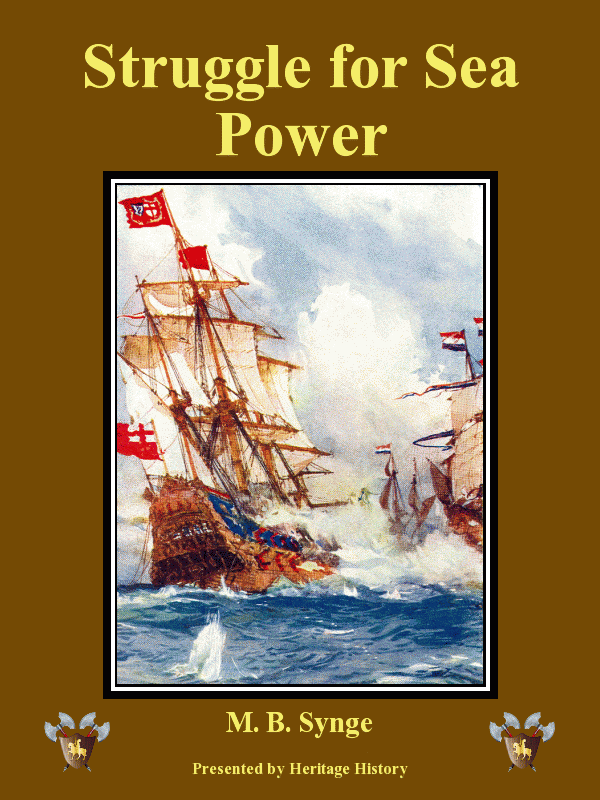 |
Struggle for Sea Power by M. B. Synge
Book IV of the Story of the World series focuses on the age of world
colonization, particularly during 18th century. The histories of European
colonies in America, Australia, South Africa, and India are related, along with
the ongoing wars between Britain and France for domination in Asia and North
America. Also covered are the American Revolution, the French Revolution, and
the campaigns of Napoleon. [87 sheets]
|
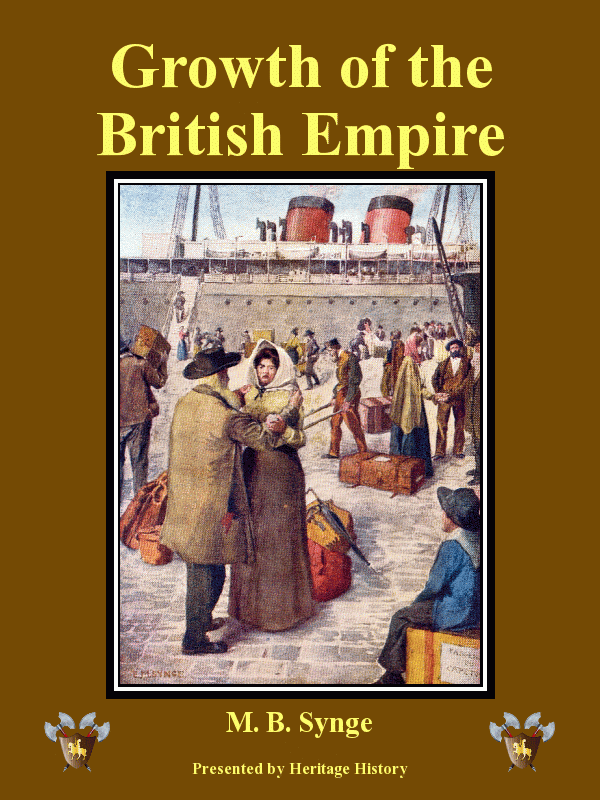 |
Growth of British Empire by M. B. Synge
Book V of the Story of the World Series focuses on the 19th century and is
written from a British centric point of view. It covers the revolutions in South
America and Mexico, the Boer War in South Africa, and the exploration of Central
Africa, the Greek and Italian wars for independence, the Crimean War, the
American Civil War, the opening of trade with Japan and China, and the rebellion
in India. [89 sheets]
|
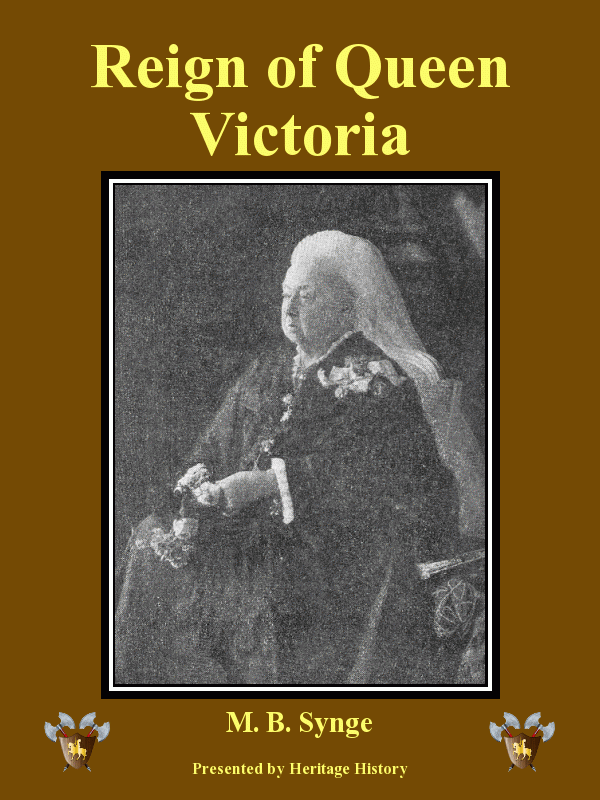 |
Reign of Queen Victoria by M. B. Synge
This book traces the history of the British Empire during the reign of Queen
Victoria, from 1837 to 1901. Important domestic reforms of the Victorian era
include restrictions on child labor, manhood suffrage, independence for Ireland,
and free trade. Short histories of many of the diverse colonies of Britain are
given, including Canada, Australia, New Zealand, South Africa, and India. The
most important wars of the British Empire, including the Crimean War, the Indian
Mutiny, The Zulu and Boer Wars in South Africa, and the wars in Egypt and Sudan
are also covered. [90 sheets]
|
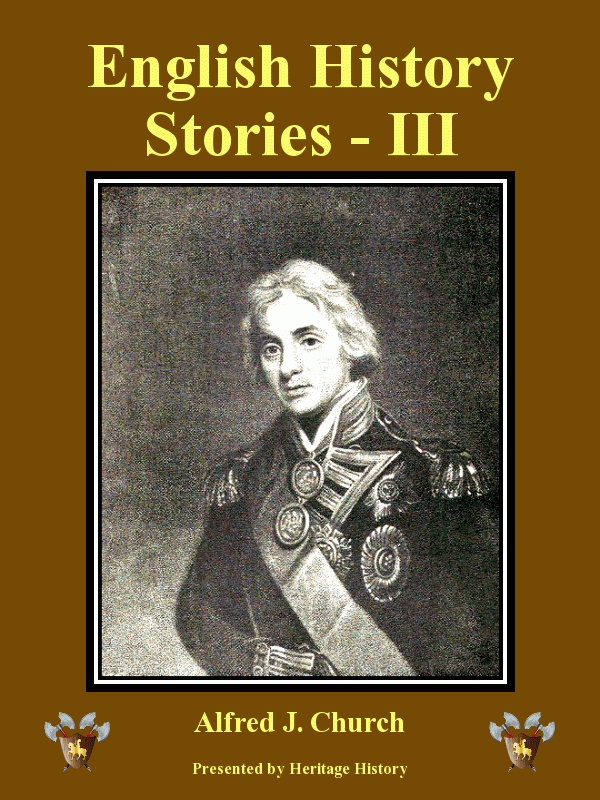 |
Stories from English History: III by Alfred J. Church
This is the third volume of Church's Stories from English History series. It
covers 1647 to 1880 and includes stories of Cromwell, the Great Plague and Fire
of London, the Battle of Londonderry, Queen Anne, Plassey, Quebec, the American
Revolutionary War, Nelson and Trafalgar, Wellington and Waterloo, the reign of
Victoria, and others. [67 sheets]
|
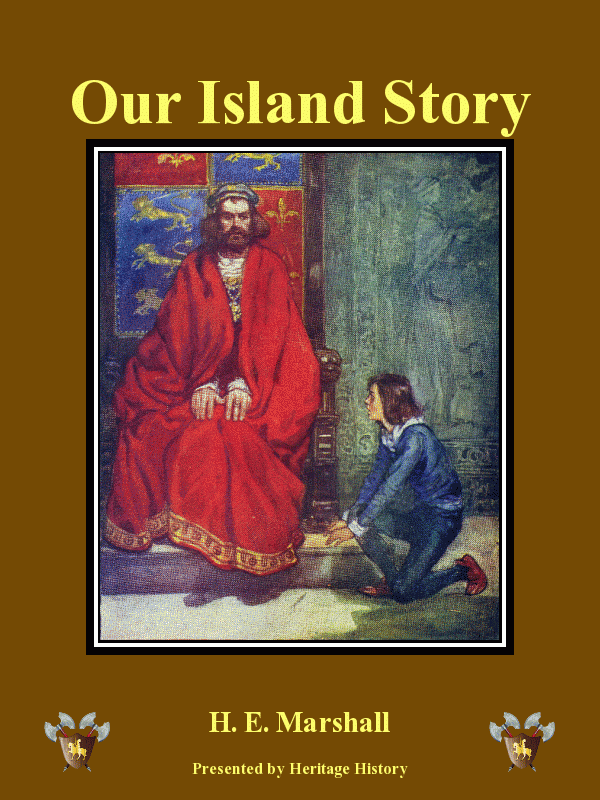 |
Our Island Story - Hanoverians by H. E. Marshall
The last twenty chapters of Marshall's storybook of English history briefly
covers the imperial age of Britain, from the Act of Union in 1707 do the
death of Queen Victoria in 1901. The stories selected from this period touch
on the most important events of the era, both at home and abroad. Domestic
topics include the Jacobian rebellions, the industrial revolution, and the
Napoleonic Wars. Imperial topics include British conquests in
Canada, India, and Africa; exploration and settlement of Australia, the Indian
Mutiny, and the Boer Wars. [46 sheets]
|
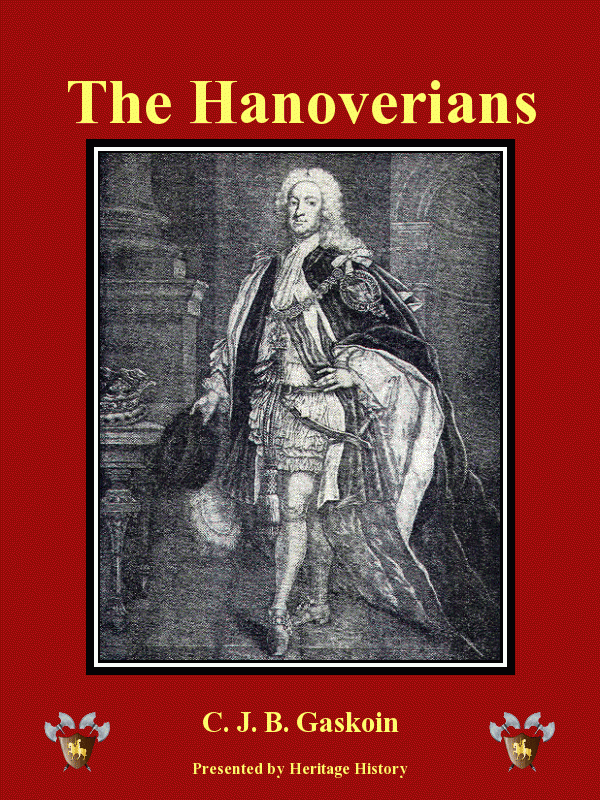 |
Hanoverians by C. J. B. Gaskoin
This book presents an excellent intermediate history of the rise of the British
Empire under the Hanoverian Monarchs, from the first Hanoverian king to the
first world war (1714 to 1911). The first five sections of the books give the
chronological history under the most important Prime Ministers, including
Walpole, the elder Pitt (Chatham), the Younger Pitt, Robert Peel, Gladstone and
Disraeli. The later sections provide more detail about such developments as the
industrial revolution, the reformed English Government, and the nations included
in the British Empire. [126 sheets]
|
Regional Histories
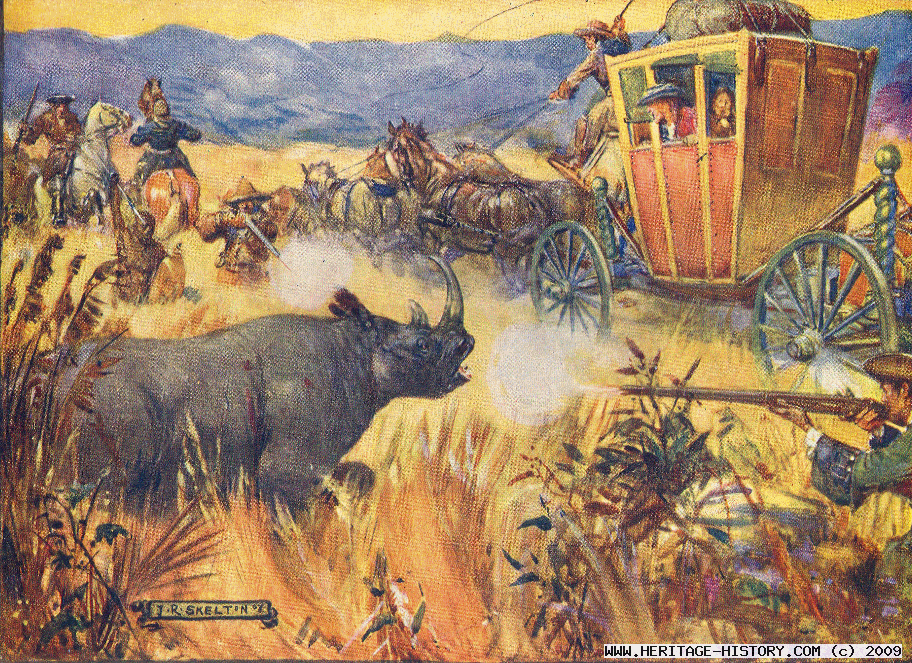
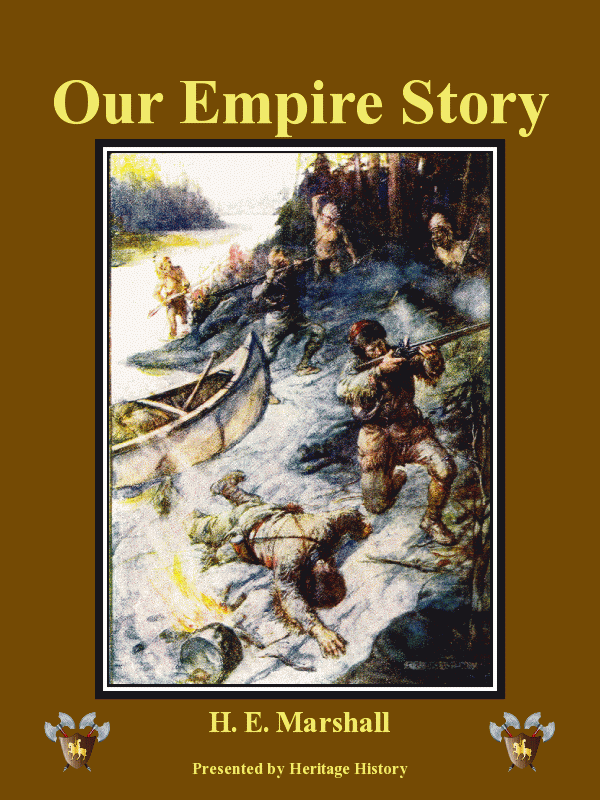 |
Our Empire Story by H. E. Marshall
This book provides a vivid and picturesque account of the principal events in
the building of the British Empire. It traces the development of the British
colonies from the days of discovery and exploration through settlement and
establishment of government. Included are stories of the five chief portions of
the British Empire: Canada, Australia, New Zealand, South Africa, and India.
[203 sheets]
|
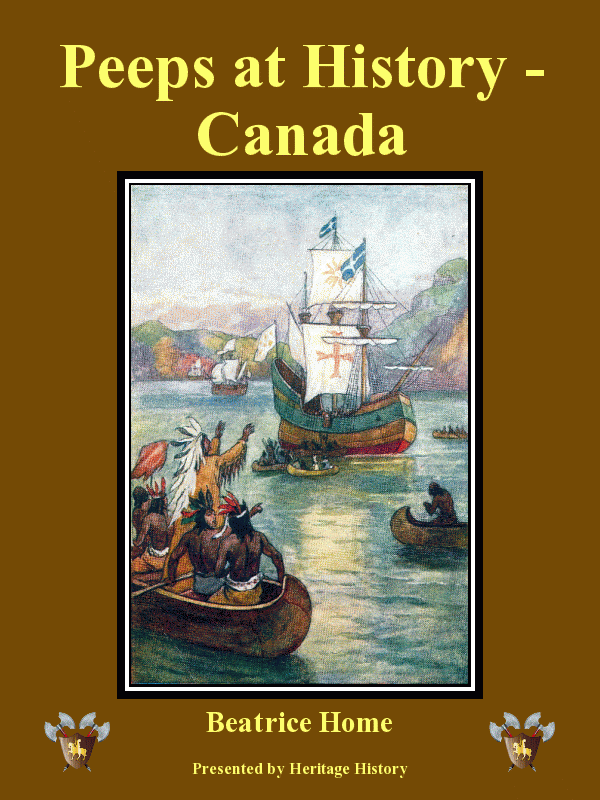 |
Peeps at History: Canada by Beatrice Home
A concise, and wonderfully illustrated history of Canada. Although short and
easily read, it covers all the major events in Canada, from the early
settlements of Cartier and Champlain, to the Acadians, and the ongoing wars with
the British, culminating in the fall of Quebec, to the early years of British
dominion. An excellent introduction to Canadian History. [41 sheets]
|
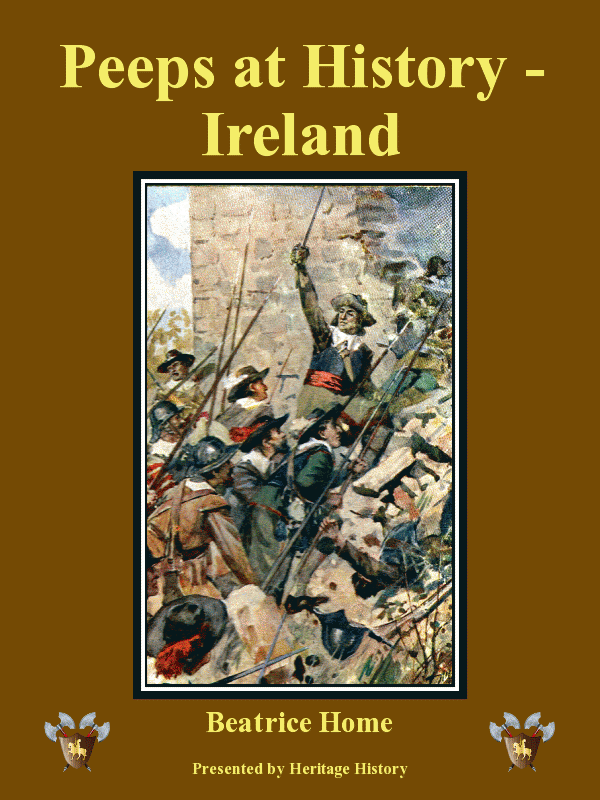 |
Peeps at History: Ireland by Beatrice Home
This history of Ireland is wonderfully short and clear, and yet it covers all
the major events in Irish history from the Celtic era and the arrival of St.
Patrick, to the rebellion during the Napoleonic Wars, and the period immediately
preceding Irish Independence. The book is concise and well illustrated, and an
excellent introduction to Irish History [44 sheets]
|
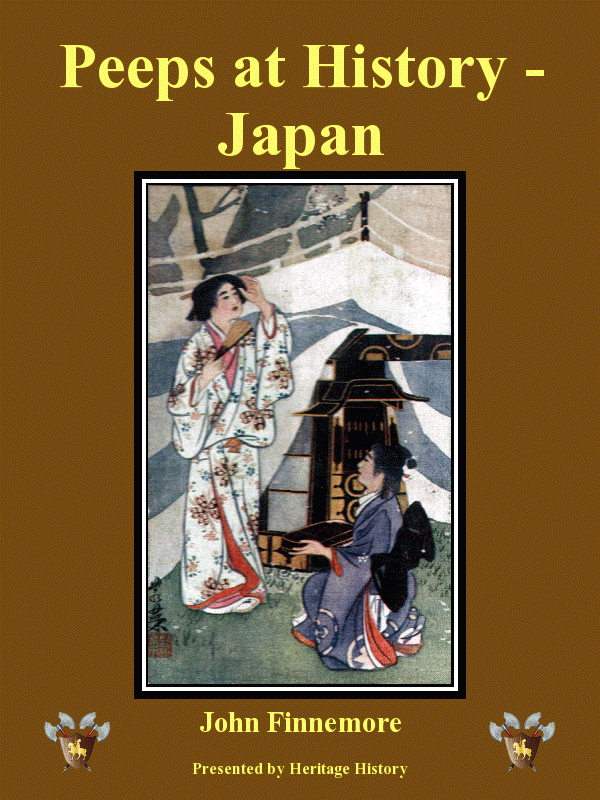 |
Peeps at History: Japan by John Finnemore
This brief history of Japan covers the four main historical periods of Japan up
until the First World War. These include the legendary period (660 B.C. to 645
A.D.), the Fujiwara and Taira Dynasties (645 to 1186), the Shogunate (1186 to
1868), and the modern period (from the opening of Japan in 1868). [55 sheets]
|
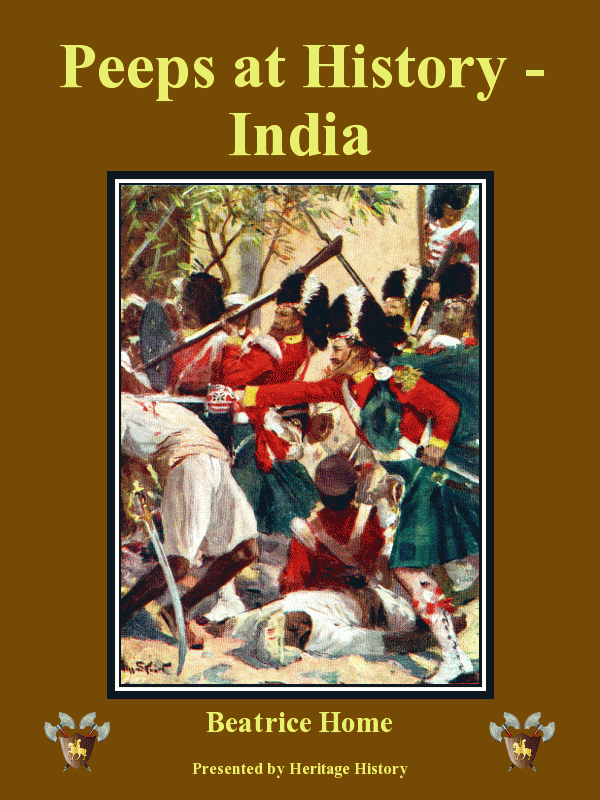 |
Peeps at History: India by Beatrice Home
This history of India begins well before era of British colonization, during the
age of the invasion of Alexander the Great, which was the west's first contact
with the east. For much of the next millennium various Moslem lords ruled parts
of northern India. Finally, in the eighteenth century, France and Britain
contested for control of the Asian trade centered in India, and for the
following two centuries, India was Britain's most important colony. [45 sheets]
|
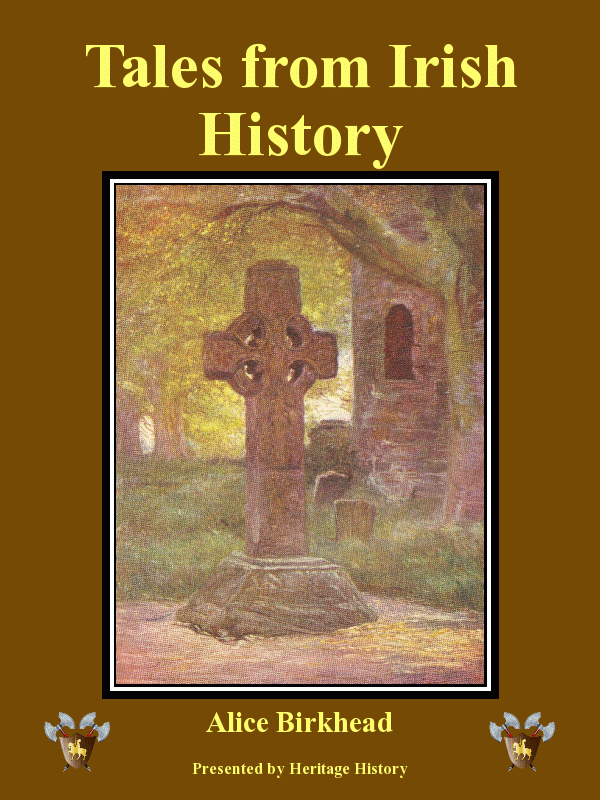 |
Tales from Irish History by Alice Birkhead
This book features true tales from Irish history from the era of St. Patrick
to the Fenian brotherhood. It features both legendary tales from the Celtic
kings, and historical characters from Boru to O'Connell. Other famous Irish
tales include stories of the Kildares and O'Neils, the invasion of Cromwell, the
battle of the Boyne, and the stories of Dean Swift and Daniel O'Connell. The
stories end in 1886 when the first bill for Irish Home rule was submitted to the
British parliament. [66 sheets]
|
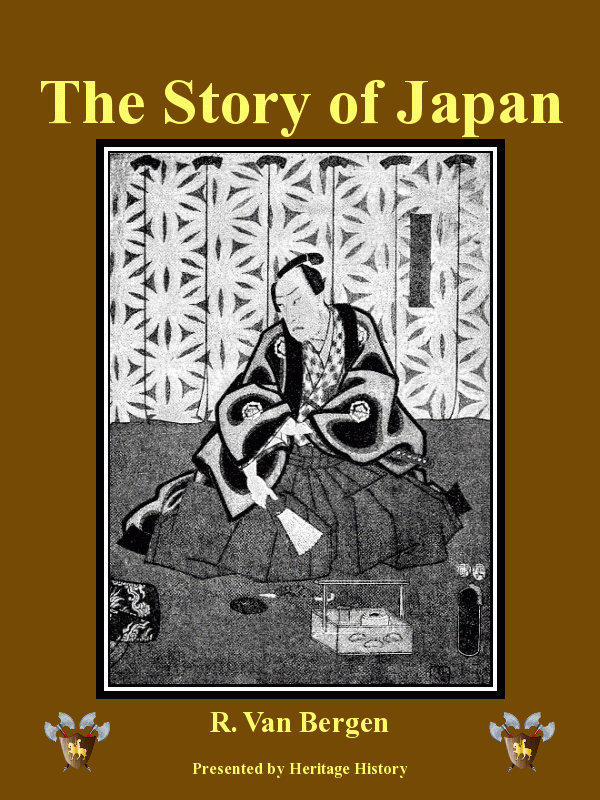 |
The Story of Japan by Robert Van Bergen
This book gives an exceptionally good history of Japan from its legendary
beginnings as the Kingdom of the Sun-Goddess to its fantastic transition from a
feudal society to a modern technological one near the end of the nineteenth
century. The author provides many stories which illustrate the unique culture of
Japan and its dedication to the Samurai virtues of courage, loyalty, honor and
duty. [112 sheets]
|
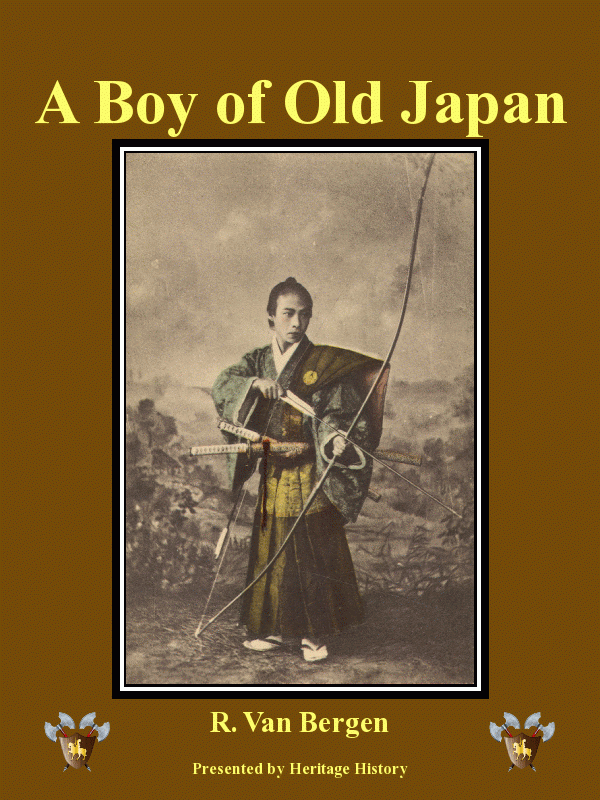 |
A Boy of Old Japan by Robert Van Bergen
This book is a true history of the Japanese Genro, or "Statesmen of
Revolutionary Times," written by an American who lived and work with the
characters involved. The heroes include several clan leaders who put aside their
own rivalries to overthrow the Tokugawa government, restore the emperors, and
expel the hated foreigners. They succeeded in overthrowing the Shogunate, but
soon realized that they could not beat the western powers, and instead committed
to modernizing Japan. [69 sheets]
|
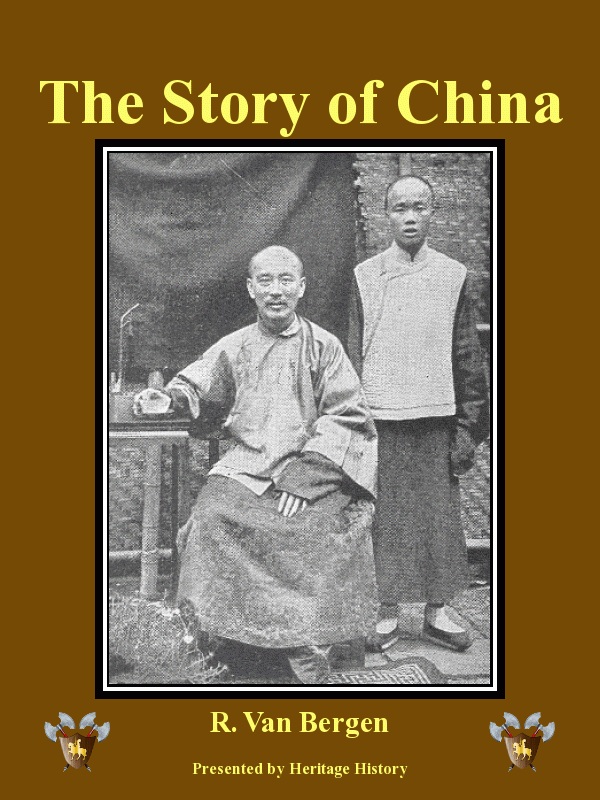 |
The Story of China by Robert Van Bergen
This book gives an excellent short history of China from the beginning of its
civilization to the fall of the Manchu Monarchy in the early 20th century. In
addition to historical development, there are many chapters devoted to Chinese
customs and culture, including their system of government, language, schools,
home life, and traditions. [95 sheets]
|
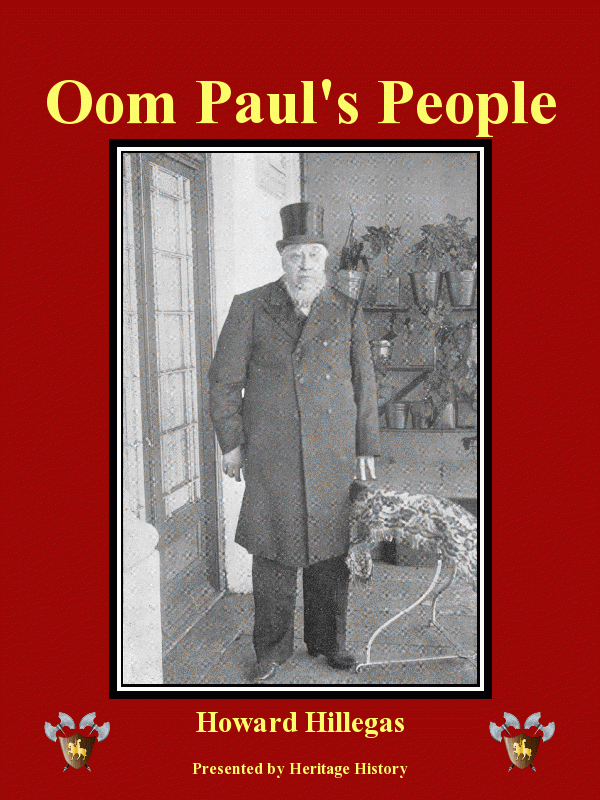 |
Oom Paul's People by Howard C. Hillegas
This book gives an excellent introduction to the situation in South Africa,
immediately preceding the Anglo-Boer War of 1899-1902. The Boers were a small
community of Dutch farmers that had lived in South Africa for over 200 years. In
the early 19th century they migrated to a barren region known as the Transvaal
in order to escape British control. But when an enormous reserve of gold was
found on their land, conflicts with Britain again arose. [86 sheets]
|
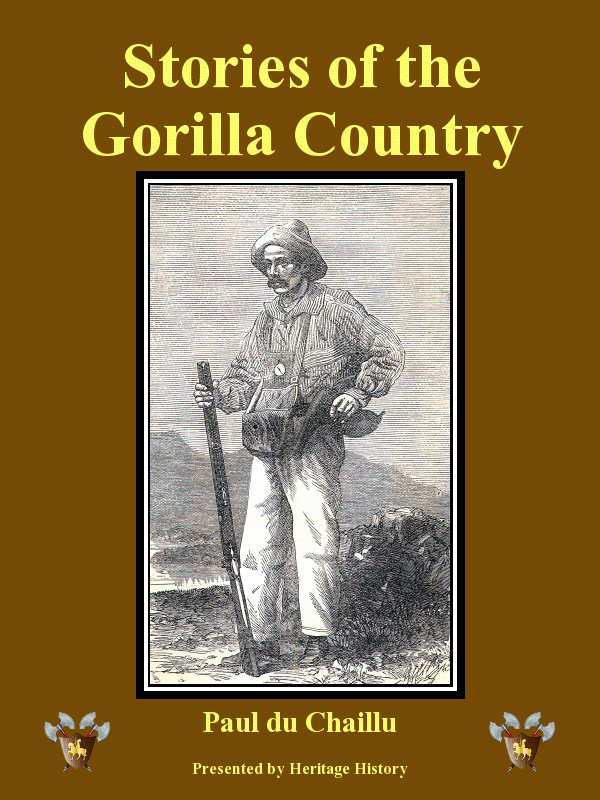 |
Stories of the Gorilla Country by Paul du Chaillu
This is the first of a series of children’s books by an early explorer of
equatorial Africa. The author set off alone as a young man to explore the
interior of Africa, hunt big game, and investigate some of the stories he had
heard about the natives. This account of his travel is packed with hair-raising
adventures and exciting stories about encounters with African wildlife and
native villagers. [120 sheets]
|
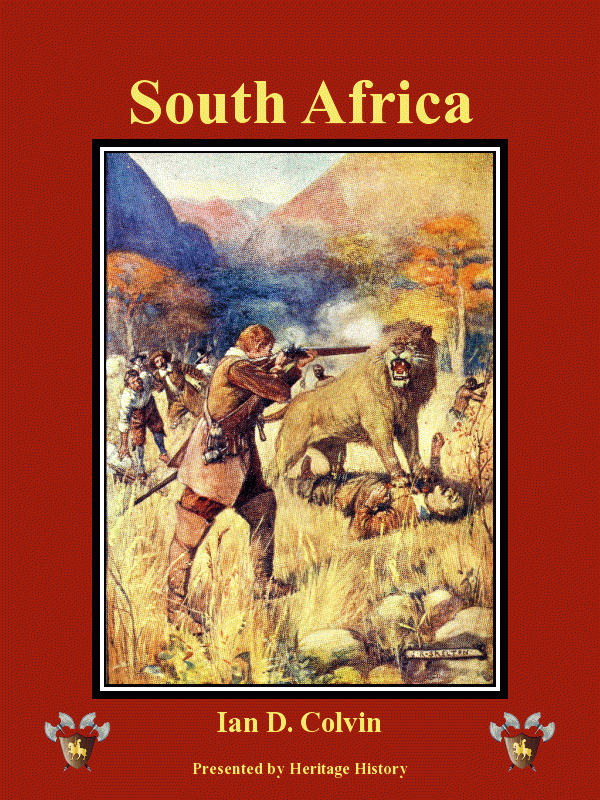 |
South Africa by Ian D. Colvin
This book is a comprehensive history of South Africa from the first exploration
of Africa by the Portuguese to the Boer Wars. Twentieth century history not
included, but the long struggle between Dutch and English settlers is covered in
depth. As part of the Romance of Empire series, the book is helpful in
understanding the pro-imperial point of view and the complexities of
colonization. [147 sheets]
| 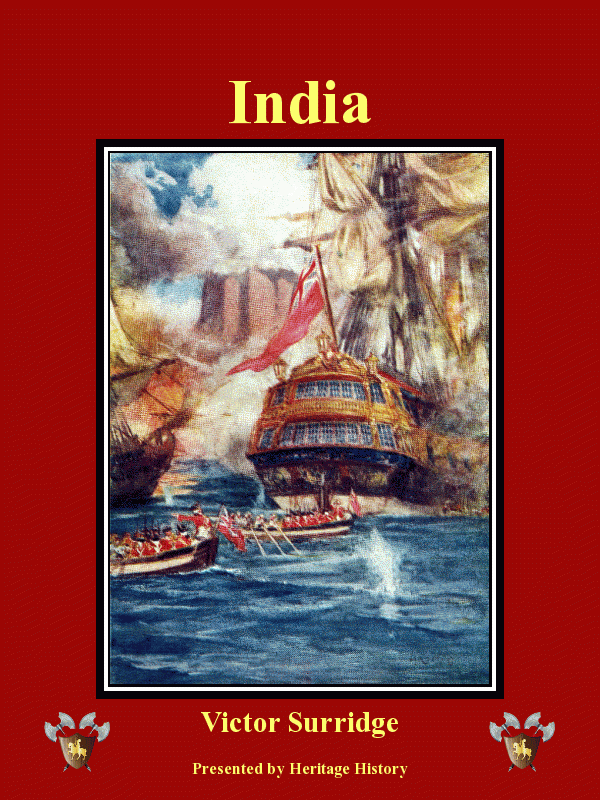 |
India by Victor Surridge
This book is part of the Romance of Empire series, written at the height of the
British empire. It recounts many of the most exciting events in the history of
India, from around the time Britain first established a trading post on the
continent, in the 1600's, until the decades following the Indian Mutiny, in
1857. The treatment of Britain's involvement is in India is somewhat
sympathetic, although many of the greatest blunders and questionable policies of
the British Raj are owned up to squarely. [120 sheets]
|
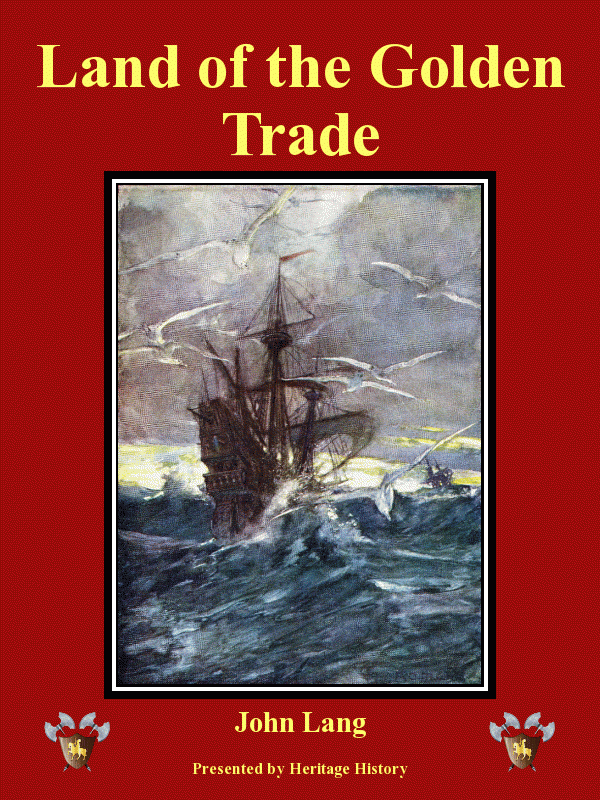 |
Land of the Golden Trade by John Lang
This book covers the exploration of Africa from the earliest voyages of the
ancient Phoenicians to about 1900. It's primary focus is the Ivory coast, and
many of the stories are about the explorers, plunders, traders, slavers, and
pirates who frequented Western Africa. There were few permanent European
settlements in the area because of the difficult climate, so the historical
stories are episodic rather than comprehensive. The history of the slave trade is
of particular interest. [122 sheets]
|
Military History
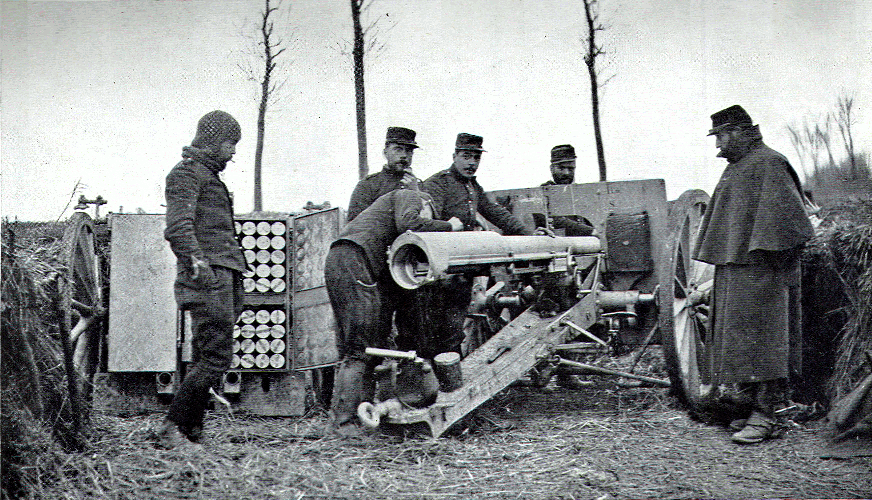
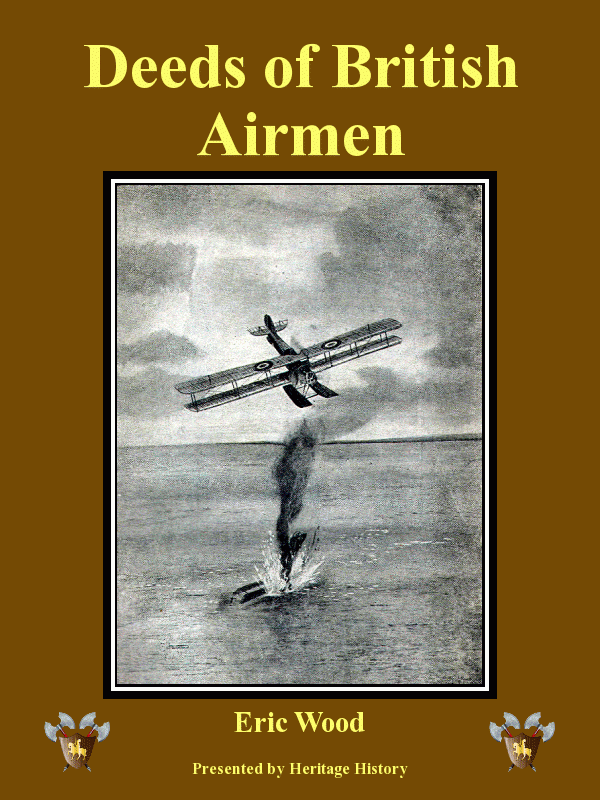 |
Thrilling Deeds of British Airmen by Eric Wood
This book, written while the Great War was still in progress highlights some of
the glorious achievements of early British aviators. In only two years time the
airplane went from being a mere oddity to a crucial weapon, and the feats of
many of the world's first flying aces are here recorded for posterity. [86 sheets]
|
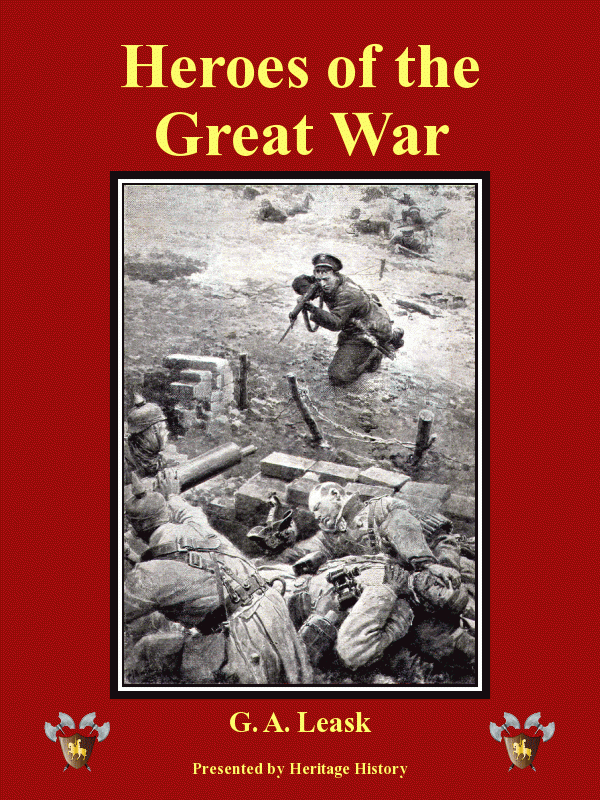 |
Heroes of the Great War by G. A. Leask
This book tells the stories of several dozen men who won the Victoria Cross in
the early years of the Great War. It was written while the war was still raging,
and is very patriotic in tone, but the stories of the extreme acts of heroism
done by these men are both harrowing and deeply moving. [82 sheets]
|
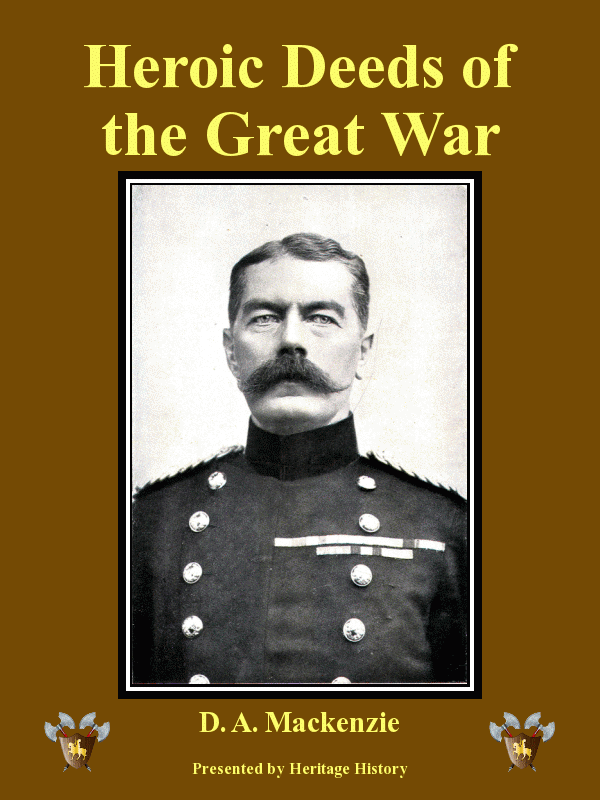 |
Heroic Deeds of the Great War by Donald A. Mackenzie
This book does not provide an overview of the Great War, but instead focuses on
individual heroes and heroic events that occurred during the war. It provide
brief bios of only a few military leaders, including Kitchener, Joffre, and
Jellico, but for the most part, tells soldiers' stories, and anecdotes of
personal interest. It was published in the year that the Great War came to a
close so it tells the stories of the war with an immediate, rather than a
reflective passion. [67 sheets]
|
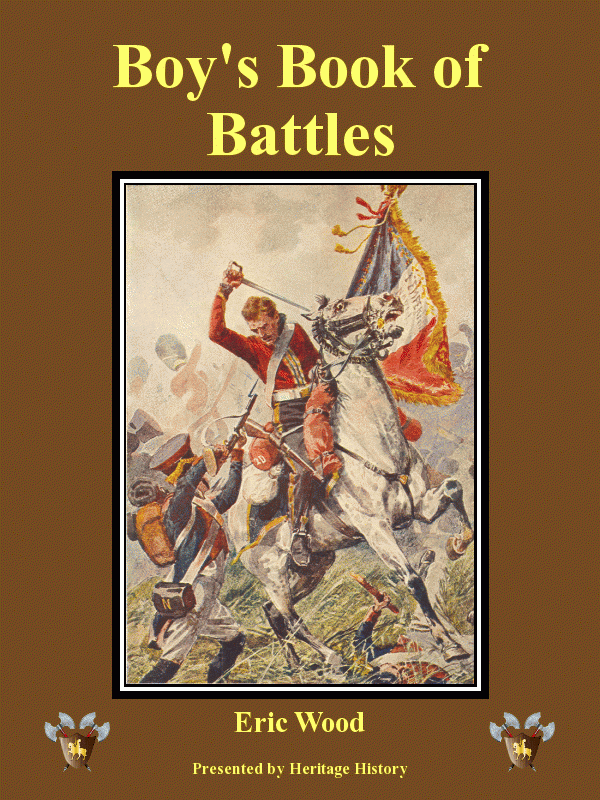 |
The Boy's Book of Battles by Eric Wood
This book focuses on the military exploits of dozens of the most important battles
in world history. Although a brief overview of the political issues involved is
usually given, the main focus is on the daring deeds, strategies, and exploits of
the battles themselves. Many critical battles from British history are given, including
Trafalgar, Waterloo, Balaclava, Delhi, Isandhlwana and Omdurman. [151 sheets]
|
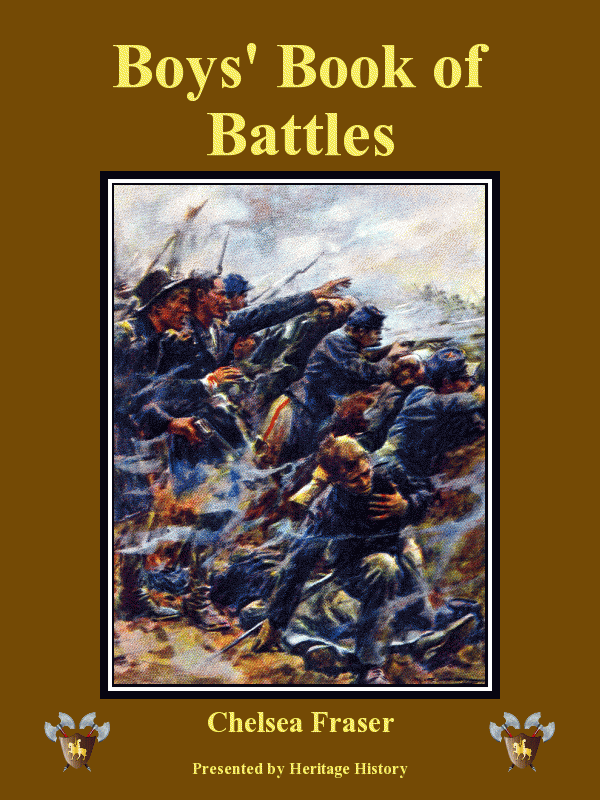 |
Boys' Book of Battles by Chelsea Fraser
Eleven of the most important battles in American and British History are brought
to life in this volume, which spends enough time giving interesting background
information to give each battle vital and lively interest. Particularly
moving are three eye-witness accounts of the horrors of the Great War at Verdun,
Ypres, and Argonne. [140 sheets]
|
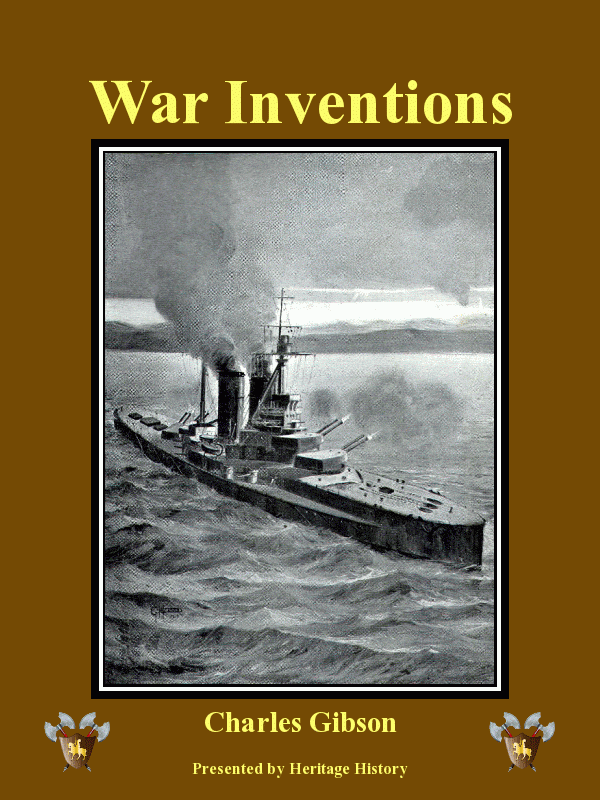 |
War Inventions and How they Were Invented by Charles Gibson
The author of this book is a talented science writer for children who is able to
explain important scientific phenomena in easy to understand language. In this
book he explains the evolution of guns, and explosives; the technology
associated with battle ships, submarines, torpedoes and mines; various surveying
instruments, and finally fighter aircraft. Although students of all ages are
spellbound by these fascinating technical histories, the book is a favorite of
middle school age boys in particular. [62 sheets] |
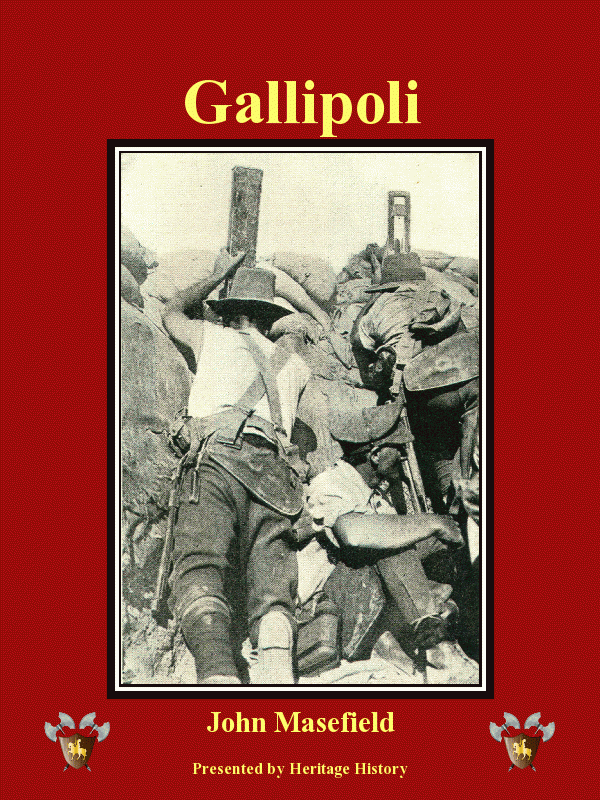 |
Gallipoli by John Masefield
This classic homage to the heroes of Gallipoli, written by one of Britain's most
eminent poets, tells the story of one of the worst military disasters in
Britain's history. It is written from a sympathetic point of view by a man who
had given up a secure University position to help with the war efforts on the
Western Front. The author had first hand knowledge of the campaign and was
essentially present as a war reporter. It was written only a year after the
disastrous battle, while Britain was still embroiled the Great War and the
wounds were still fresh. [65 sheets]
|
 |
The Story of the Great War by Usher
This book is written for the general reader and gives a very complete overview
of the Great War. It briefly explains the causes and sentiments of the war, along
with a comprehensive overview of the battle strategies. The author notes that
the vast scale of the war and the fact that simultaneous battles occurred on
various fronts, make a full comprehension of the war difficult. Even so, he
provides an engaging, but thorough review. [144 sheets]
|
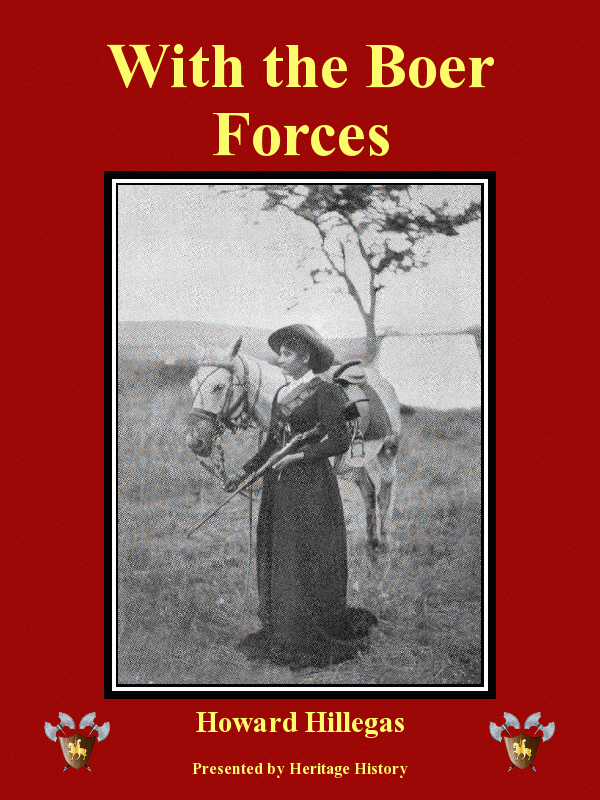 |
With the Boer Forces by Howard C. Hillegas
Written by an American Journalist who accompanied the Boer army on several of
its campaigns during the Anglo-Boer war, this book gives and excellent first
person account of the actual operations and incidents of the war. It focuses
entirely on the military operations involved, but gives a close up and personal
account of the lives of the soldiers and leaders of the Boer rebellion against
the imperial ambitions of Britain. [93 sheets]
|
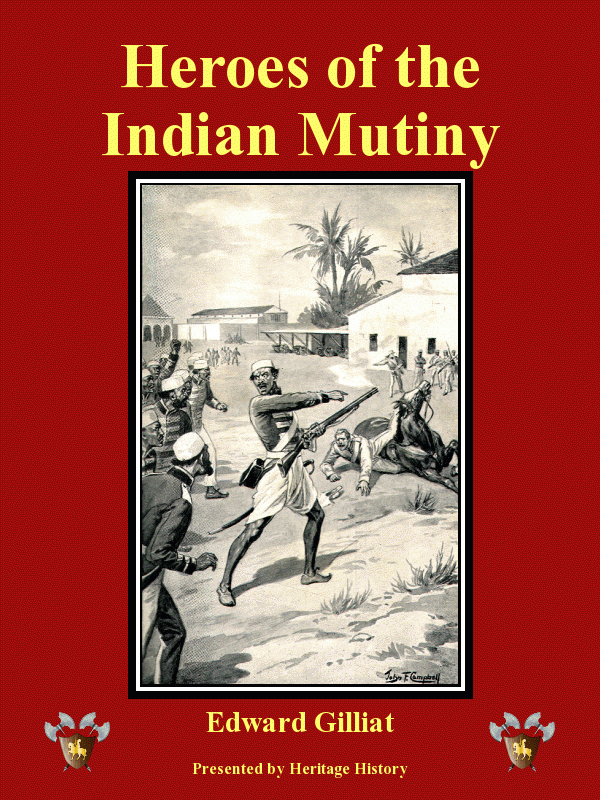 |
Heroes of the Indian Mutiny by Edward Gilliat
This book is not a comprehensive history of the Indian Mutiny, but rather, the
life stories of many of the British heroes who were involved in the struggle. It
is therefore best appreciated by someone already familiar with the course of
events who is interested in learning more details of the battles and the
background of the British presence in India prior to the mutiny. [174 sheets]
|
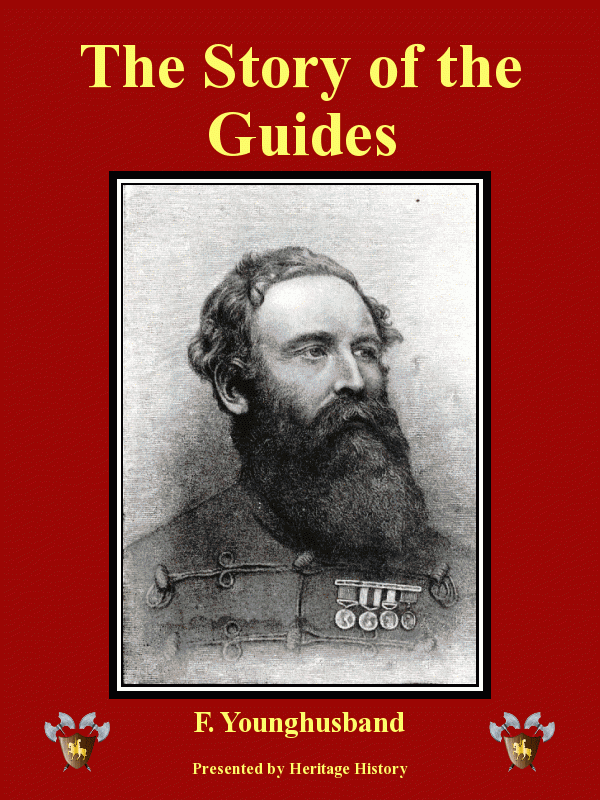 |
The Story of the Guides by Younghusband
The Guides were a British regiment formed mostly of native soldiers who patrolled
the highlands of Northwest India and Afghanistan during the late 19th century.
They were renowned for their skill as horsemen, fighters, and explorers. This
book tells the story of the formation of the Guides and recounts several of
their most famous battles.
|
Biography
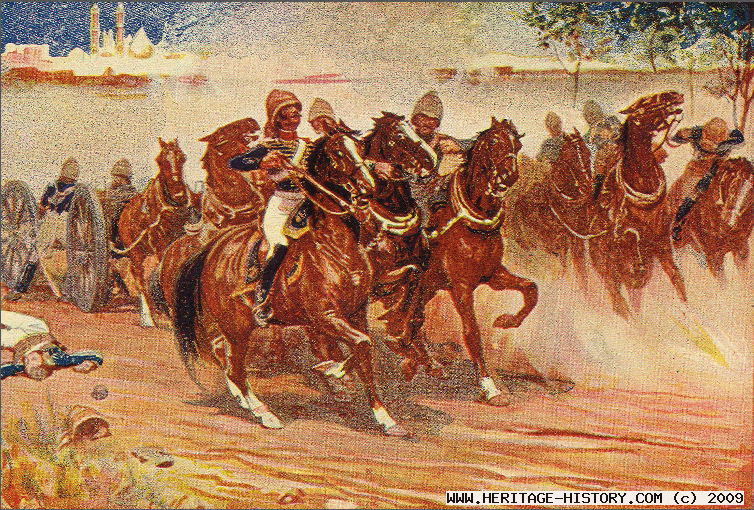
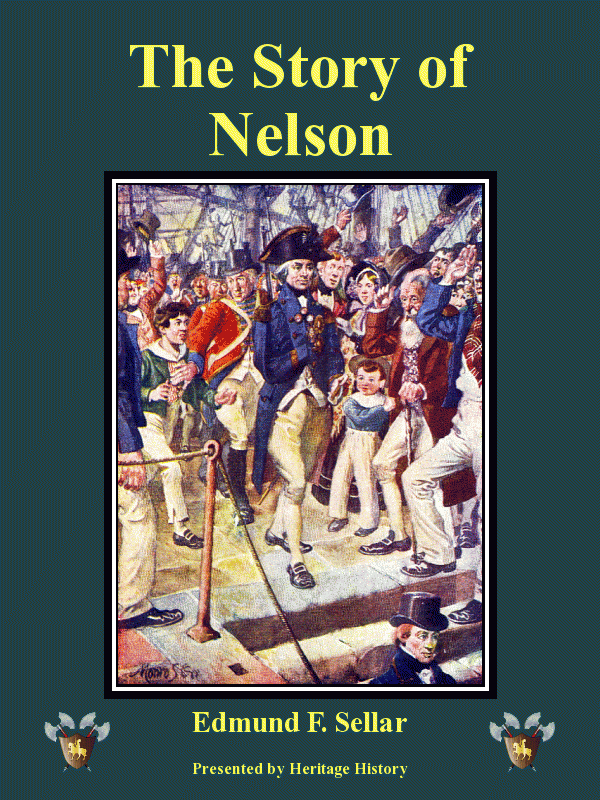 |
The Story of Nelson by Edmund F. Sellar
Nelson was one of the most popular and romantic naval heroes of all history. He
went to sea at an early age, but first made a name for himself at the Battle of
St. Vincent, in 1797. From that time until his death at Trafalgar in 1805, he
led the British navy in several daring and audacious sea-fights, including the
Nile and Copenhagen. His victories gave Britain undisputed control of the seas
at a time she was at great threat from an invasion by Napoleon. [40 sheets]
|
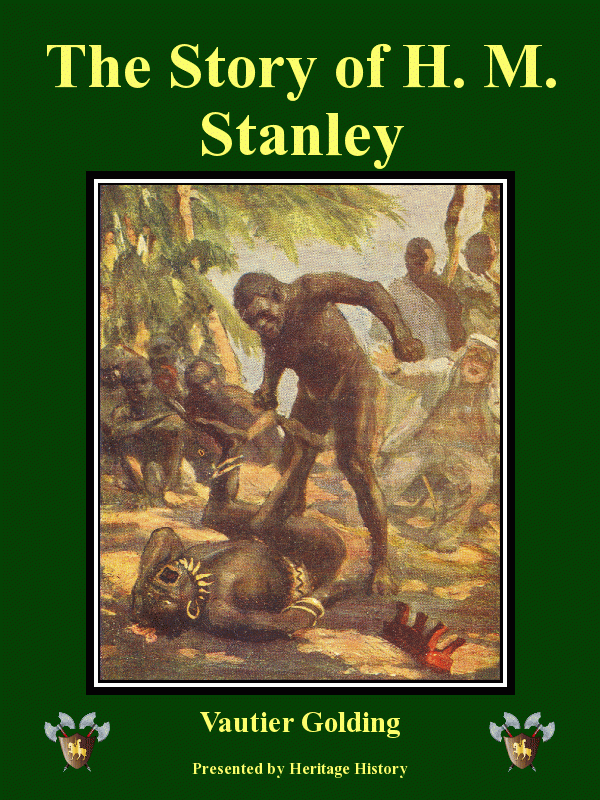 |
The Story of H. M. Stanley by Vautier Golding
H. M. Stanley was a journalist working as a foreign correspondent when he set
off for the interior of Africa to find Livingstone. He then continued
Livingstone's work of exploration, eventually leading the first European party
to navigate the Congo River. Though Stanley admired Livingstone greatly, his
temperament and purposes were entirely dissimilar to his patient and selfless
predecessor. [32 sheets]
|
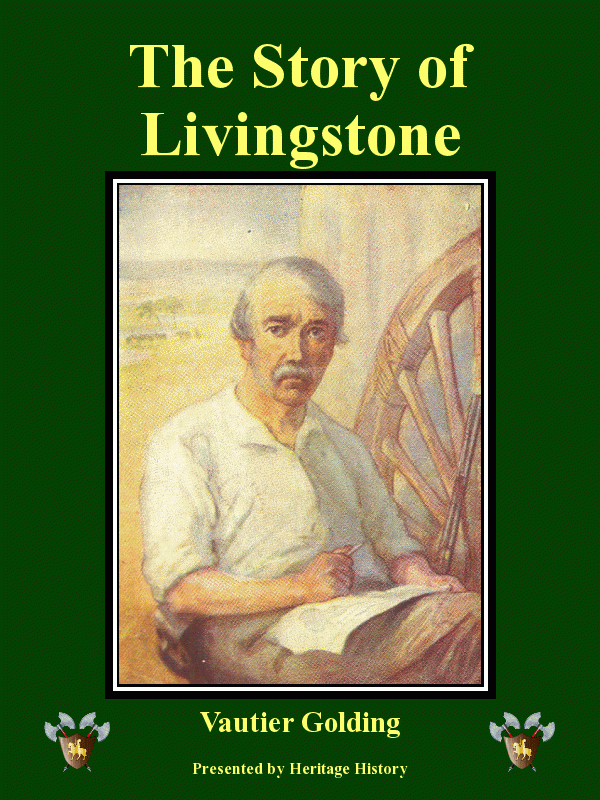 |
The Story of Livingstone by Vautier Golding
This biography of Livingstone is a concise and easily read story of the
remarkable life of the great African missionary and explorer, David Livingstone.
He was born into a humble family in Scotland, but at an early age decided to
work as a missionary. He spent his entire life in central Africa serving the
natives, working against slavery and demonstrating the best aspects of
civilization. [32 sheets]
|
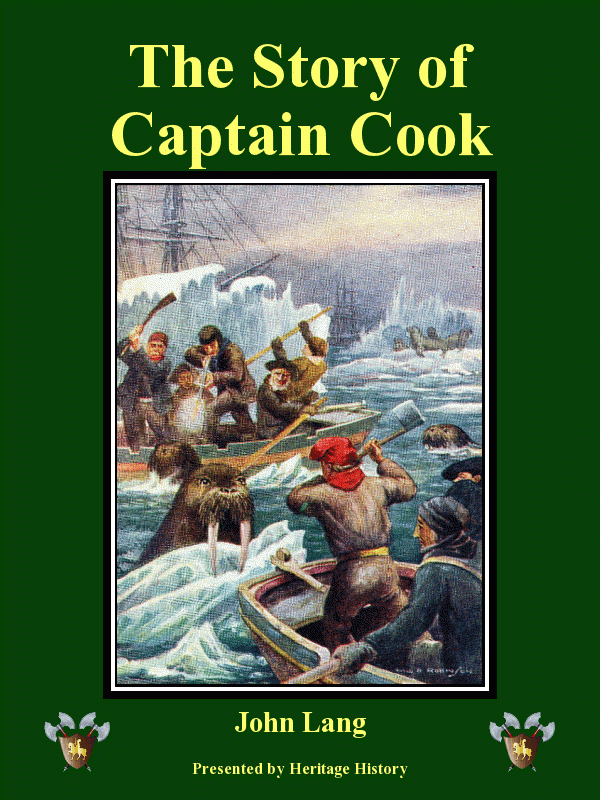 |
The Story of Captain Cook by John Lang
Captain James Cook is famous for his discoveries of New Zealand and Australia,
but his contributions to British naval supremacy were many. He was the most
outstanding captain of his age, and the care he took to keep his crews healthy
eliminated the threat of scurvy, the great scourge of sailors. His meticulous
charts, and attention to detail set a new standard in sea-faring and navigation. [34 sheets]
|
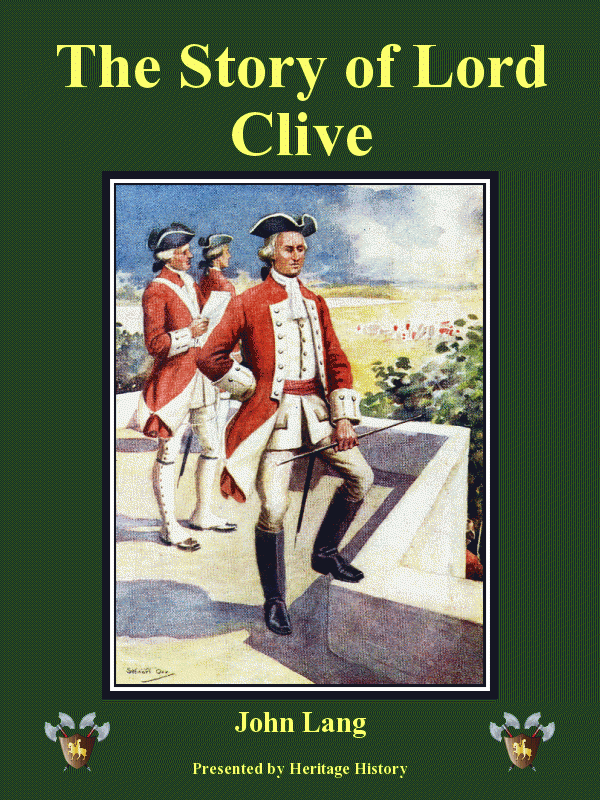 |
The Story of Lord Clive by John Lang
Robert Clive was a controversial, but extremely effective soldier, who is
credited with gaining India for the British Empire. Though he started his career
as a mere clerk for the East India Company, he was thrust into a series of
adventures during which he showed extraordinary daring, and military genius. He
made a great name for himself, and through a series of astounding victories,
secured a foothold in several of the most important provinces of India. [32 sheets]
|
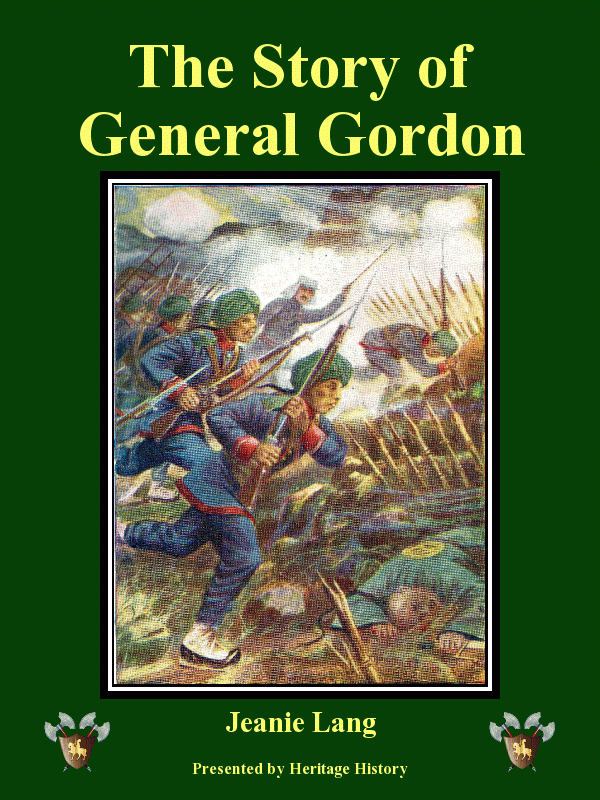 |
The Story of General Gordon by Jeanie Lang
General Charles Gordon was an extraordinarily principled officer during the
height of the British Empire, who accepted several very challenging assignments,
both in China, during the Tae-Ping Rebellion, and in Africa where he opposed the
slavers, and tried to bring order and civilization to the Sudan. He was
tragically killed during a siege of Khartoum, when the British forces failed to
send a relief party to his aid. [38 sheets]
|
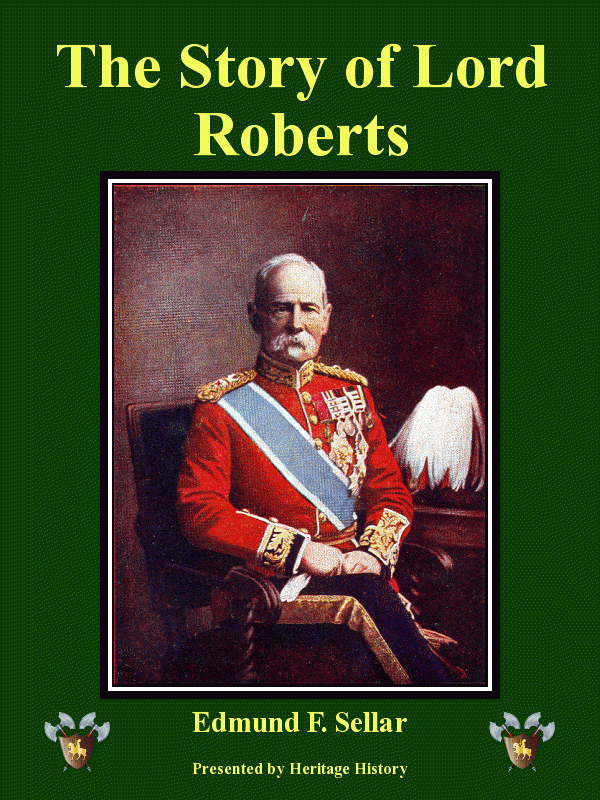 |
The Story of Lord Roberts by Edmund F. Sellar
Lord Frederick Roberts was the most eminent commander of the British Army in the
late 19th century. As a young officer he fought to put down the Indian Mutiny,
and spent most of his long career in India. He was involved in campaigns in
Burma, Afghanistan, and Abyssinia during the hey-day of Imperial Britain. He was
finally called out of retirement to lead the British against the Boers in South
Africa at the turn of the 20th century. [39 sheets]
|
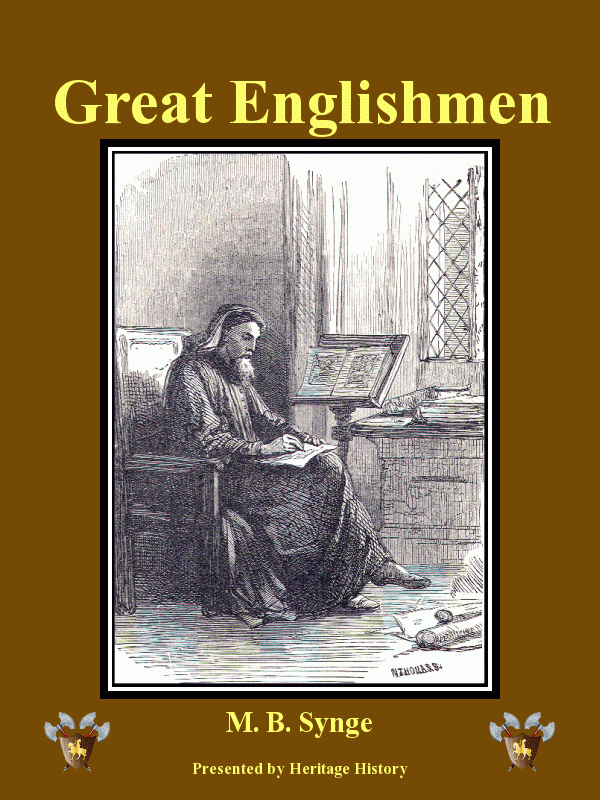 |
Great Englishmen by M. B. Synge
Sixteen short biographies of eminent Englishmen are given. Although there are
many important men of action portrayed in this volume, including Nelson, Alfred
the Great, Clive, and the Black Prince, many men whose accomplishments were in
the realm of culture are given also. Some of these include the Venerable Bede,
Milton, Isaac Newton, William Caxton, George Stephenson, and others. [63 sheets]
|
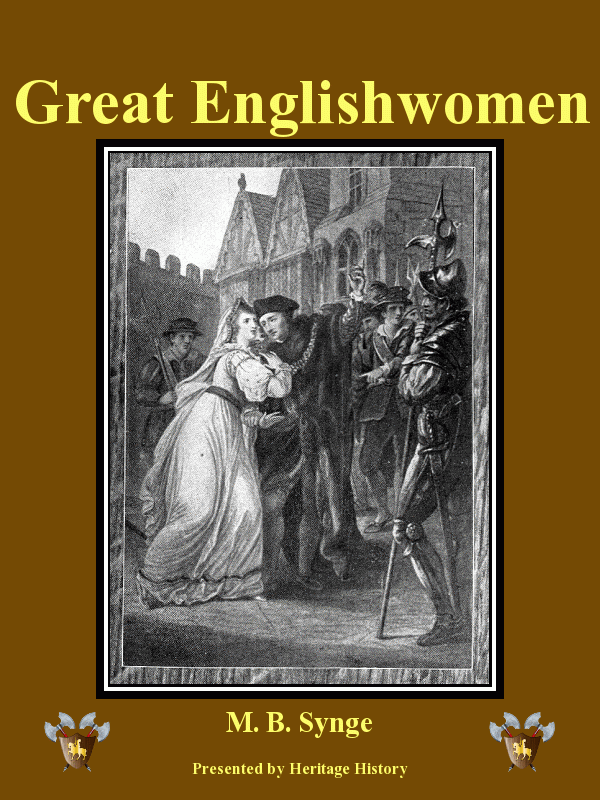 |
Great Englishwomen by M. B. Synge
Sixteen short biographies of eminent, but not overly famous Englishwomen are
given. Included are several queens, but also a variety of women accomplished in
cultural or professional fields, including Angelica Kaufman (an artist), Mary
Somerville (a scientist), and Elizabeth Fry (a prison reformer), and many
others. [52 sheets]
|
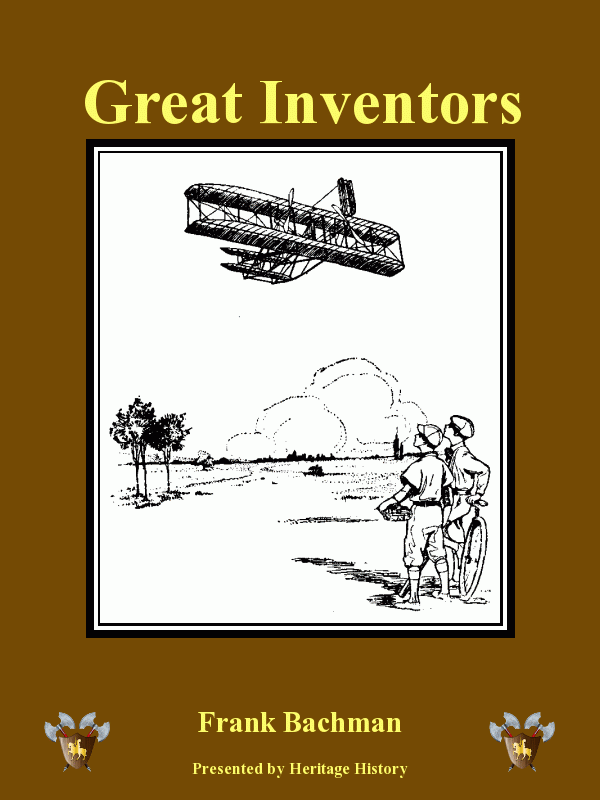 |
Great Inventors and Their Inventions by Frank Bachman
Twelve stories of great inventions, grouped under inventions of steam and
electric power, inventions of manufacture and production, and inventions of
printing and communication. The final chapter introduces the famous inventors of
the early twentieth century. The story of each invention is interwoven with
the life of its inventor. Through these stories the reader learns how great
things are brought about and how perseverence and hard work make for success.
[117 sheets]
|
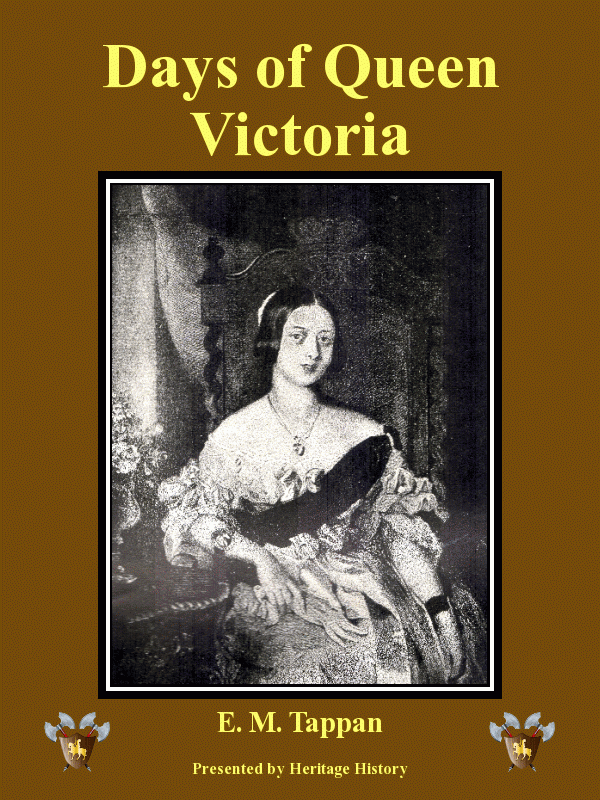 |
In the Days of Queen Victoria by Eva March Tappan
This book tells the story of the life of Queen Victoria, a well-beloved woman
who became queen at eighteen and for nearly 64 years wore the crown of Great
Britain. In order to appeal to youngsters, the book focuses largely on the
childhood of the princess. It relates her training for the monarchy and the
exemplary way she executed her duties, while managing a household of nine
children. The focus of this book stays on Victoria herself rather than on the
politics of the Victorian age. [101 sheets]
|
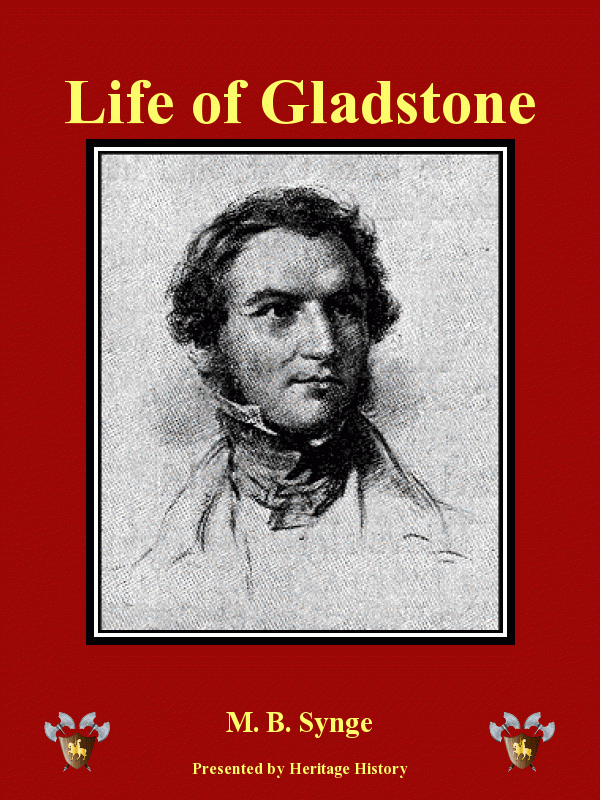 |
The Life of Gladstone by M. B. Synge
William Gladstone was one of the most important politicians during the 19th
century. His political career spanned over six decades and corresponded very
closely to the reign of Queen Victoria. Although he started his career as a
Tory, he eventually became a leader of the Liberal Party and was responsible for
such reforms as the reduction in tariffs (free trade), the establishment of
public education, and the extension of the voting franchise to all working men.
Throughout his career he promoted the idea of political autonomy of Ireland, and
stuck to his principles in spite of great setbacks. [66 sheets]
|
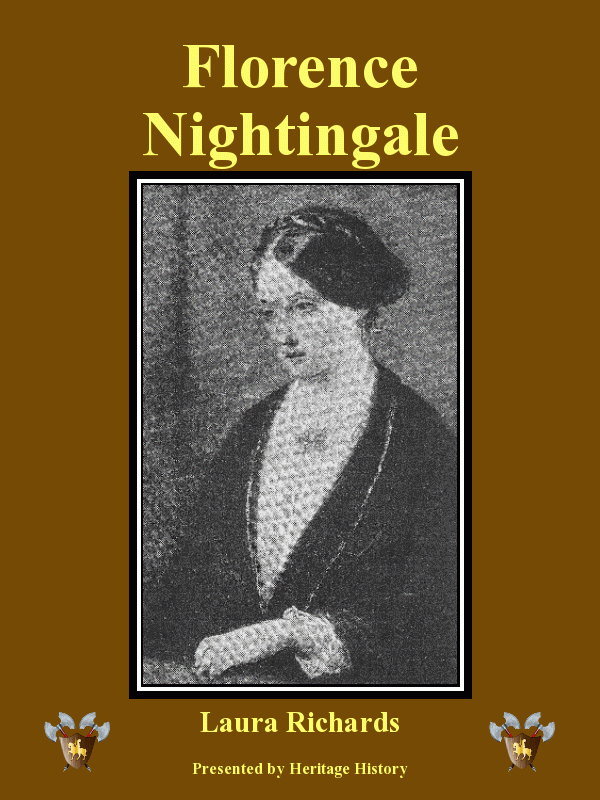 |
Florence Nightingale by Laura E. Richards
This book tells the inspiring story of Florence Nightingale from her earliest
days as privileged daughter of an English squire to her role as Angel of the
Crimea. Even as a young girl her nursing talents were evident as she doctored
her dolls and ministered to sickly animals. With the training she received at
hospitals on the Continent, she was ready when the call to the Crimea came.
Facing unspeakable filth and disorganization, she and her staff of nurses cared
for thousands of sick and wounded soldiers, earning their undying gratitude. [51 sheets]
|
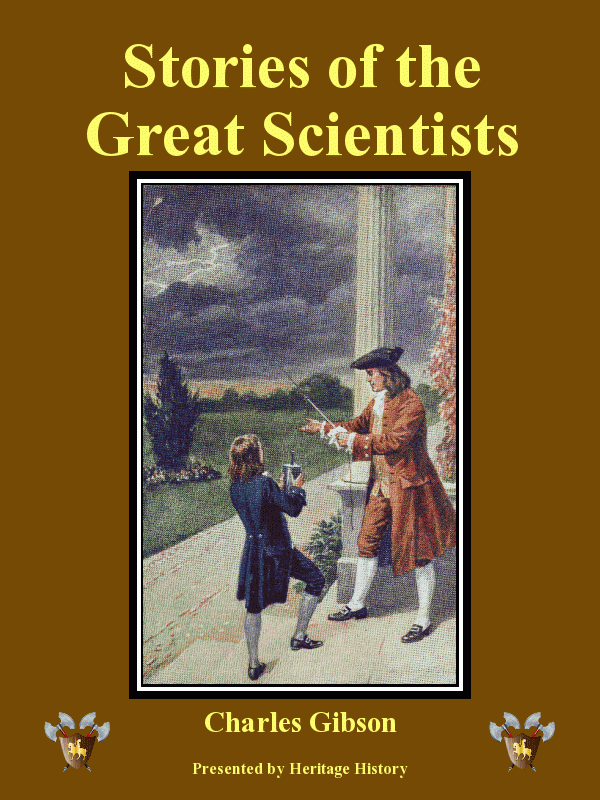 |
Stories of the Great Scientists by Charles Gibson
This book provides a thoughtful account of the lives of more than a dozen of the
most important scientists of the ancient world, and the modern era, up to the end
of the 19th century. The author has 'taken all possible care to state only facts
that are reliable, and, whenever possible, to dispel popular errors that have arisen'
in the retelling of the lives of these scientists who include Roger Bacon, Galileo,
Newton, Priestly, Dalton, Herschel, Faraday, and many others. Since Great Britain played
a major role in the scientific revolution of the 19th century, a very high percentage
of modern-era scientists were British. [135 sheets]
|
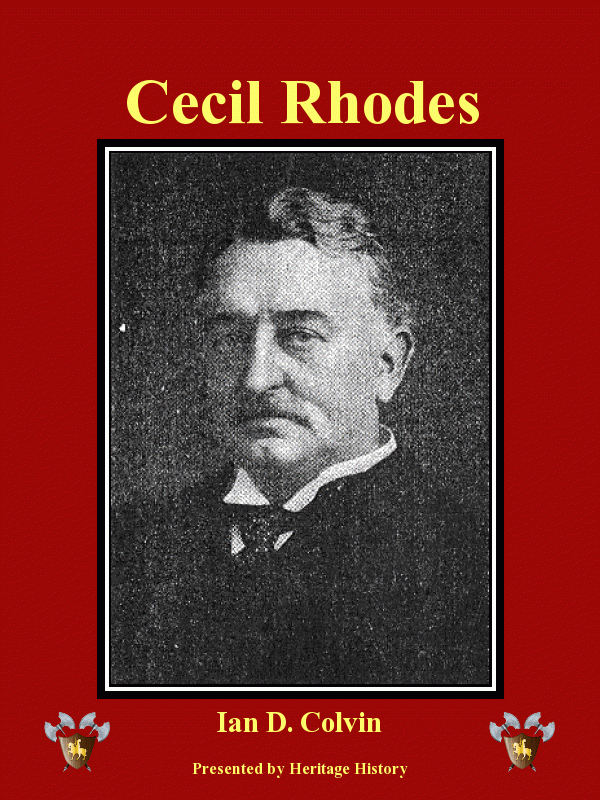 |
Cecil Rhodes by Ian D. Colvin
Cecil Rhodes was called the Colossus of South Africa. He made enormous sums of
money on South Africa's natural resources of diamonds and gold, but his real
love was politics and he worked ceaselessly toward his vision of a Unified South
Africa. Though always a controversial figure, he dedicated his entire life and
fortune towards promoting what he considered the best aspects of British
culture. [57 sheets]
|
Legends
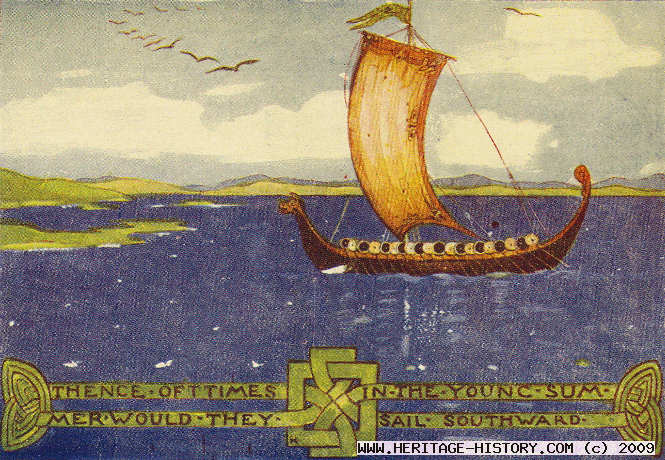
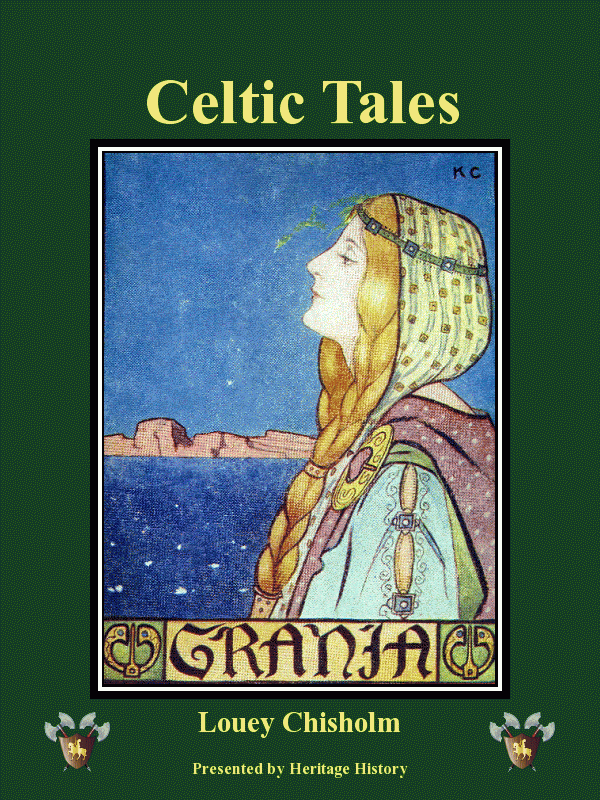 |
Celtic Tales by Louey Chisholm
Three traditional Celtic fairy tales beautifully retold. One story is about four
children who are turned into swans by their evil stepmother. The other two are
stories of ill-fated lovers. [38 sheets]
|
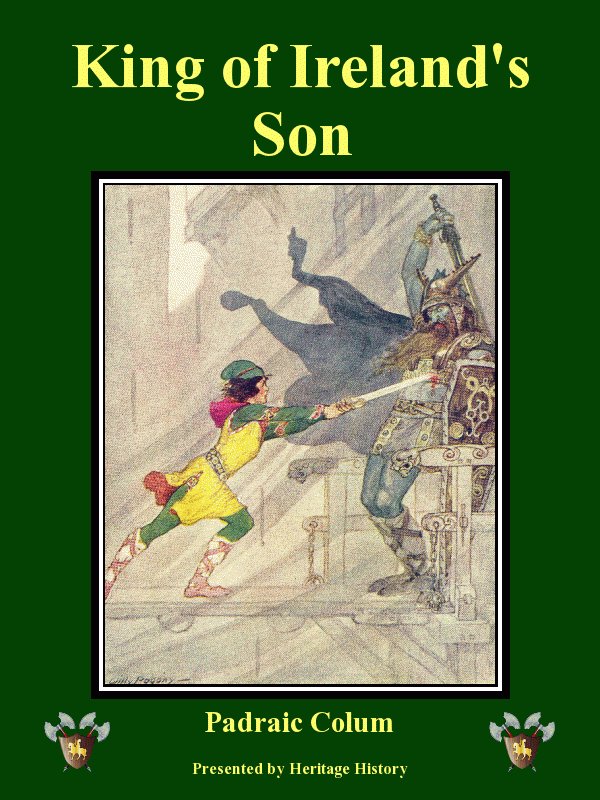 |
King of Ireland's Son by Padraic Colum
Book of legends involving the adventurous son of the King of Ireland. Set in a
mystical Celtic island in pre-Roman times, the prince gets involved with an
enchanter's daughter, the king of cats, and many other interesting characters.
[105 sheets]
|
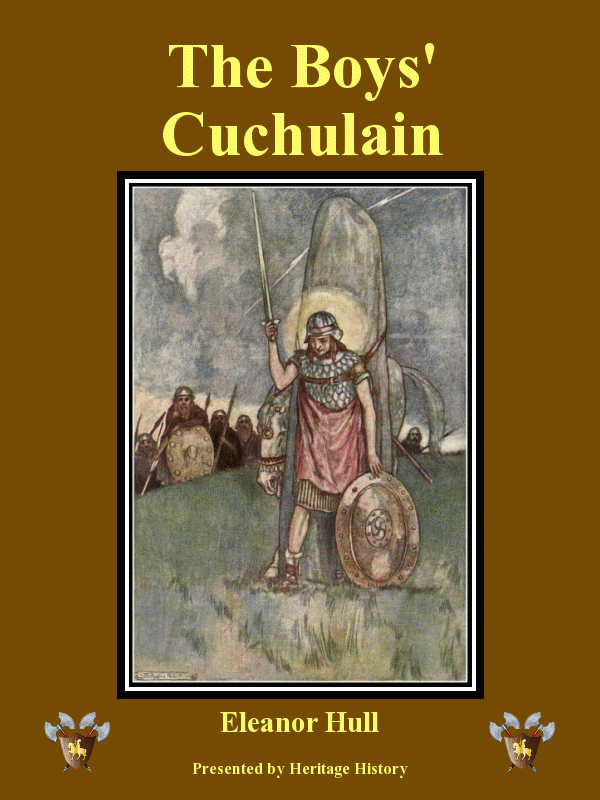 |
The Boys' Cuchulain by Eleanor Hull
The legend of Cuchulain, the greatest of the Celtic warriors it still a favorite
in all of Ireland. Also known as the "Hound of Ulster", Cuchulain defended
Ulster from Queen Maeve when only a boy. He is sent by jealous neighbors to
Scotland to train as a warrior but after adventures there, returns to claim his
bride Emer. After many more adventures in Ireland he is tricked by his nemesis
Queen Maeve, and perishes in battle. The story of Cuchulain is heroic, non-stop
action and a delight for readers of all ages. [118 sheets]
|
Literature
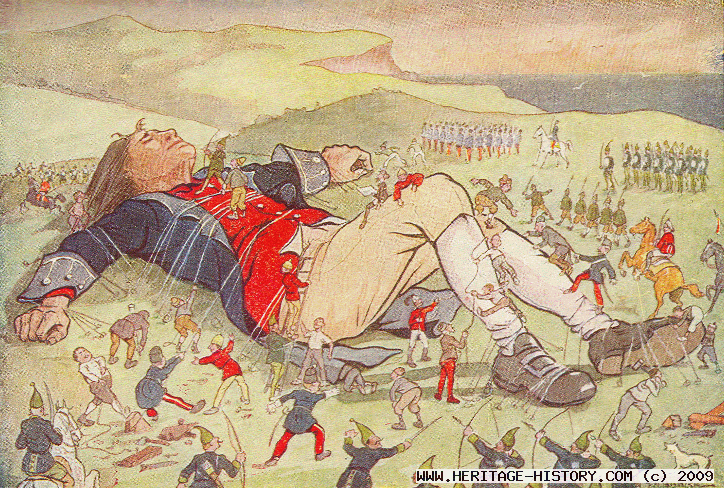
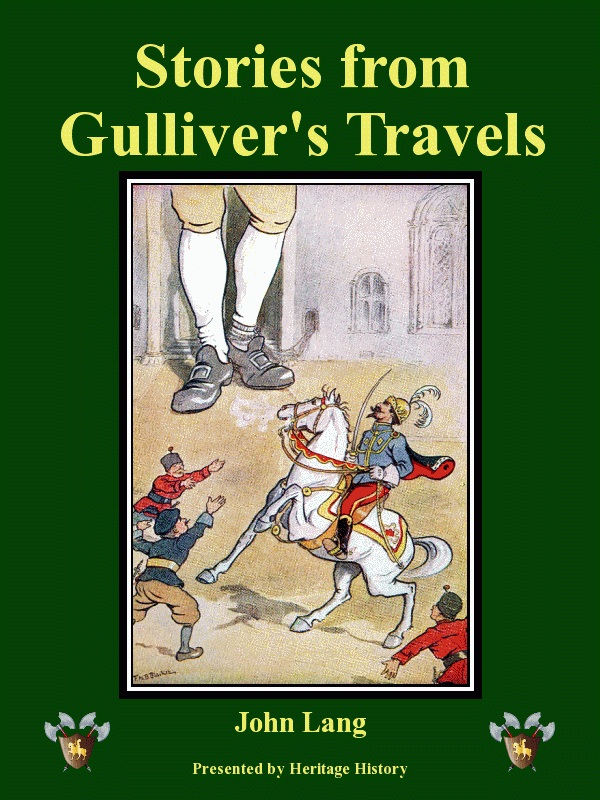 |
Stories from Gulliver's Travels by John Lang
This accessible and humorous retelling of Swift's classic Gulliver's Travels
recounts the story of two of Gulliver's most famous voyages. In Lilliput,
Gulliver is captured by midgets but he eventually wins their trust by helping
them fight their enemies from the Island Blefuscu. He then travels to
Brobdingnag, the land of the giants where he is kept as a pet by the king. Most
of the political allusions from the original are above the heads of young
students, but the story itself is highly entertaining. [36 sheets]
|
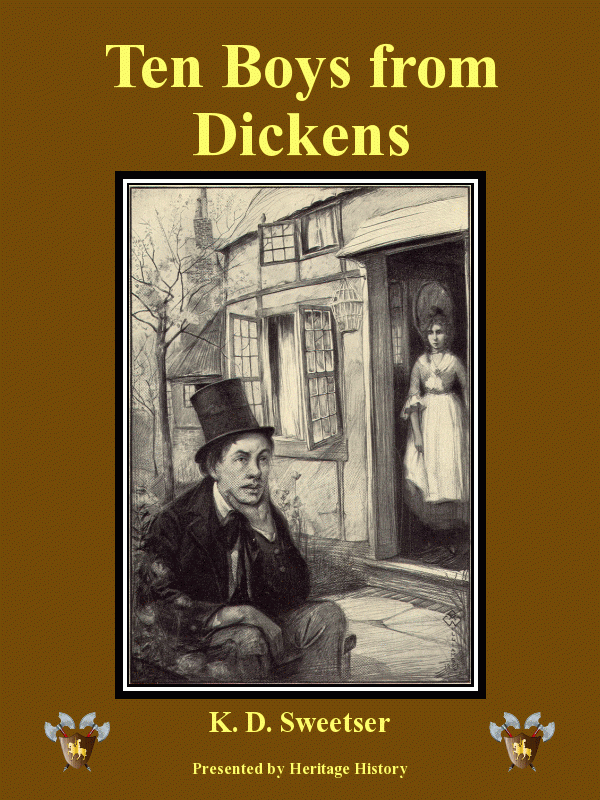 |
Ten Boys from Dickens by K. D. Sweetser
These stories, adapted for middle school age children, are taken
from ten of Dickens most famous books. Each provides a character sketch of a
well-known young character, and is intended to interest young people in further
enjoyment of Dickens. Some of Dickens boy heroes include Tiny Tim, Oliver Twist,
Tommy Traddles, David Copperfield, Paul Dombey, and Pip. [102 sheets]
|
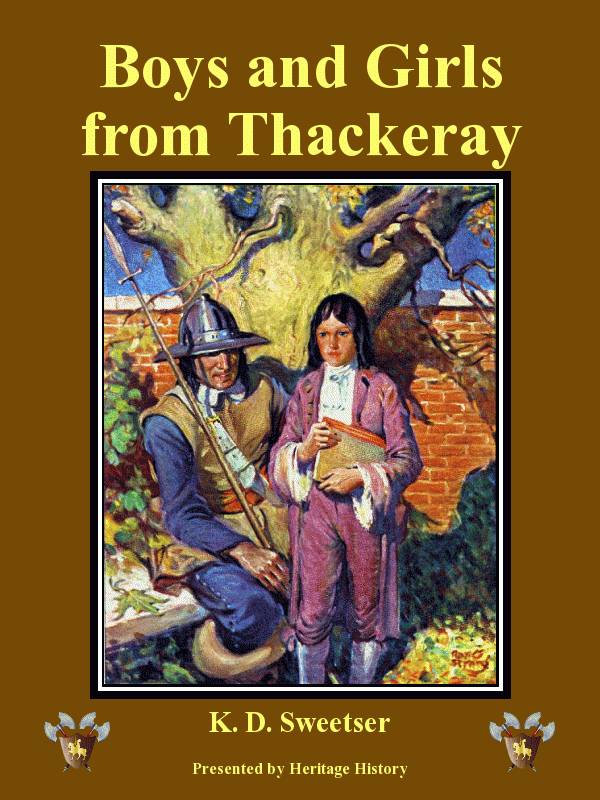 |
Boys and Girls from Thackeray by K. D. Sweetser
Thackeray was one of the greatest novelists of Victorian era, and this book
introduces eight of his most famous childhood characters by way of short
anecdotes taken from his novels. Some of the famous childhood characters
introduces in this collection include Henry Esmond, Becky Sharp, George Osborne,
and Ethel Newcombe. [154 sheets]
|
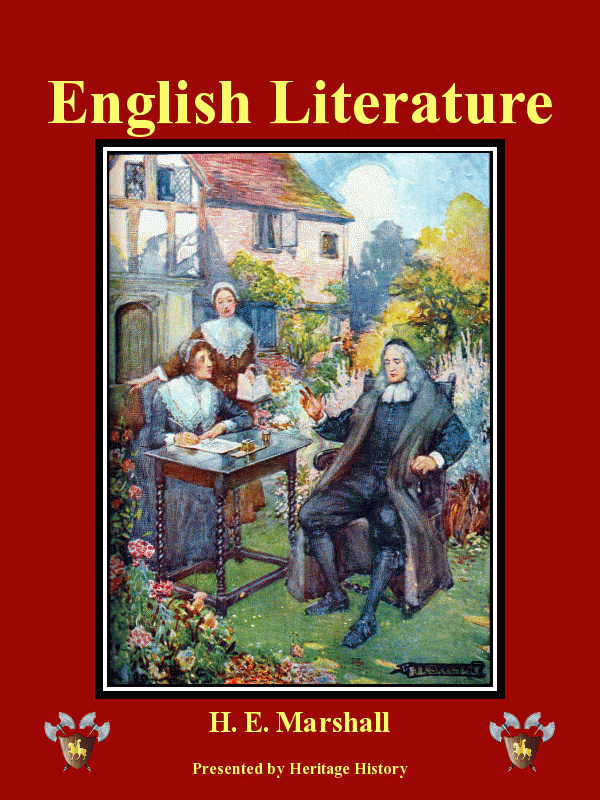 |
English Literature for Boys and Girls by H. E. Marshall
A terrific and accessible introduction to English literature by one of Britain's
greatest authors of Juvenile History. All of the major authors and literature of
England are covered, from the Celtic ballads to the nineteenth century greats
such as Dickens and Thackeray. Short examples of most of the literature is
included, also with fascinating biographies. [329 sheets]
|
Historical Fiction
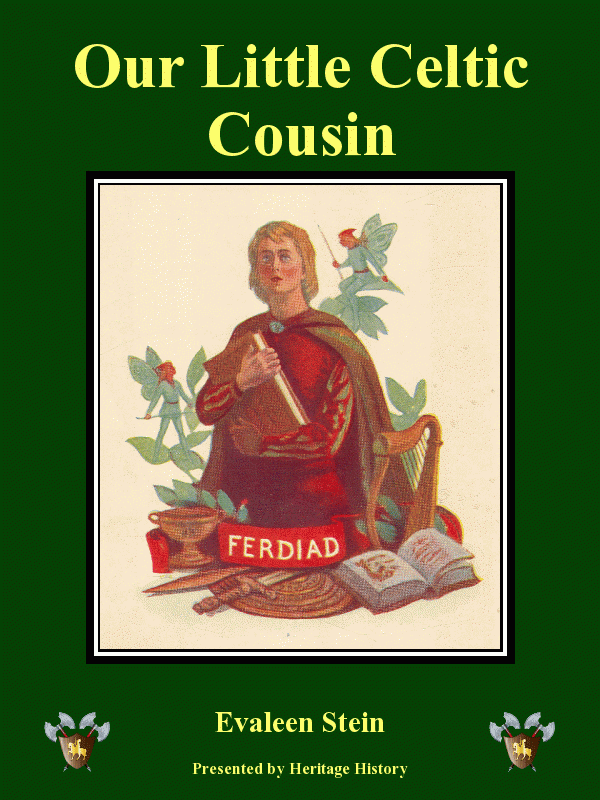 |
Our Little Celtic Cousin of Long Ago by Evaleen Stein
The story of Ferdiad, a boy of Ireland, is set in the time of High King Brian Boru, when
the Danes were pillaging the Irish countryside. The tale recounts how Ferdiad's foster-father Angus
becomes poet to the High King and how Ferdiad himself recovers a lost treasure.
The book provides a glimpse into the customs and social life of the Celts, with special
emphasis on their artistic achievements, including the Book of Kells and the
stories of Cuchulain. [37 sheets]
|
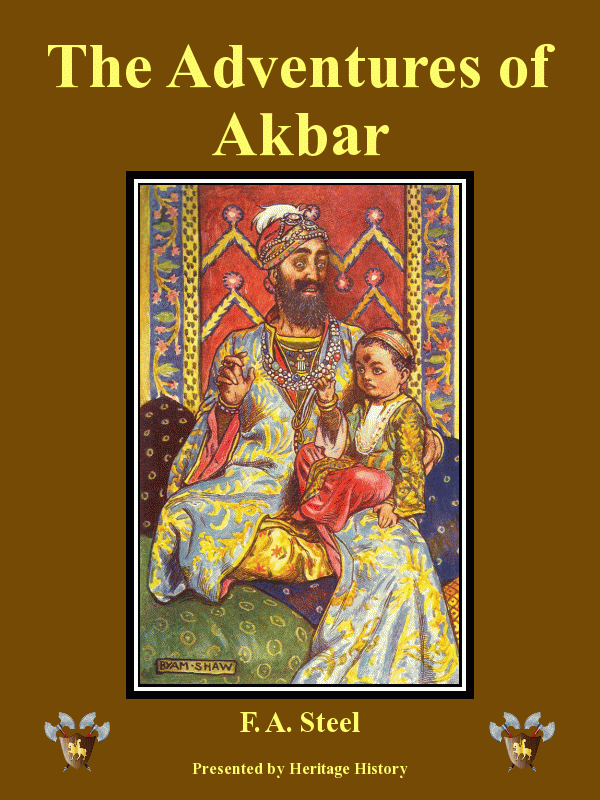 |
The Adventures of Akbar by Flora Annie Steel
Akbar the Great, who lived about the same time as Queen Elizabeth I. of England,
was one of the most renowned emperors of the Mughal empire in India. This story
follows some of his adventures as a small boy, when under the protection of
servants loyal to his parents, he had to flee across the mountains to escape
from his family's enemies. [81 sheets]
|
Copyright © Heritage History 2012
All rights reserved
|











